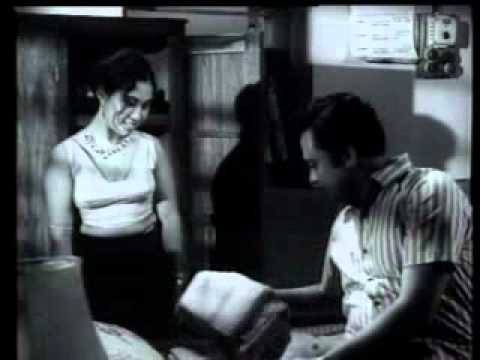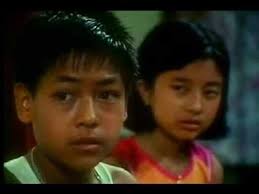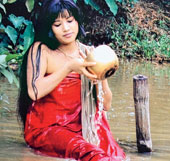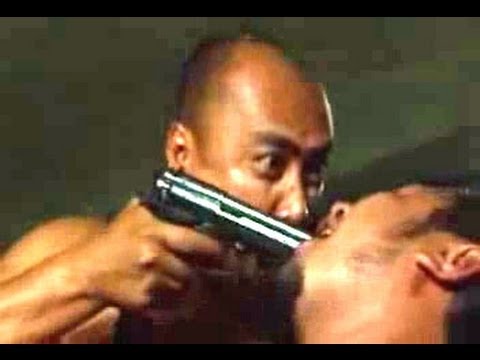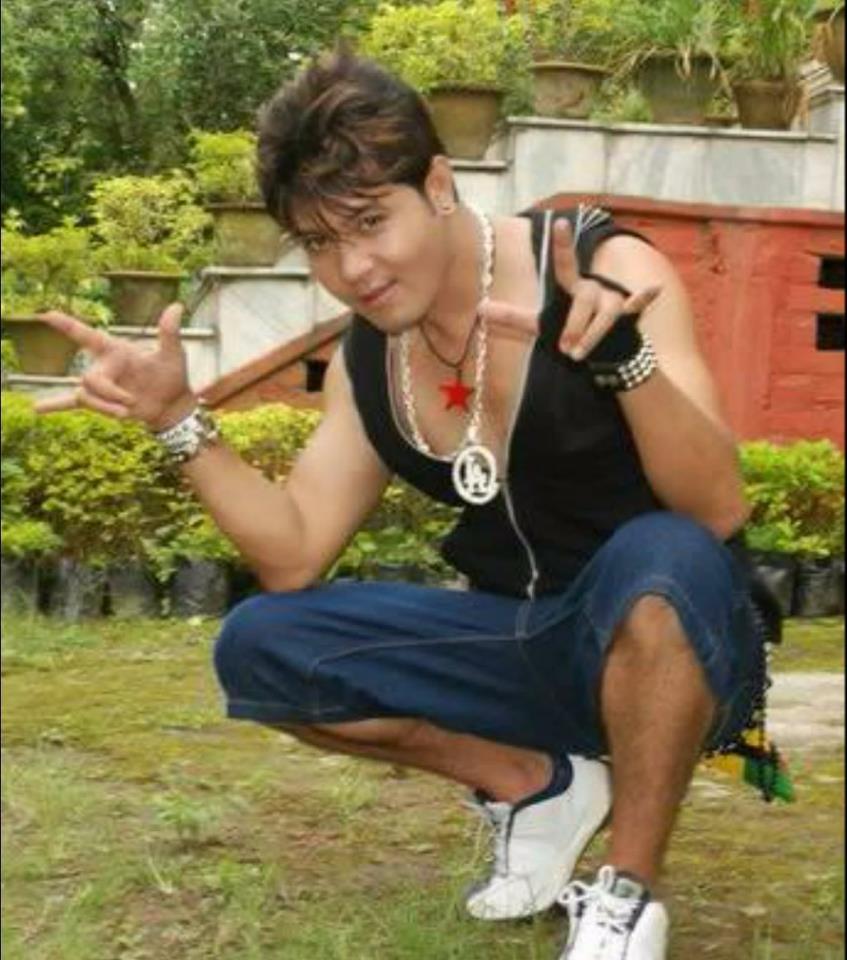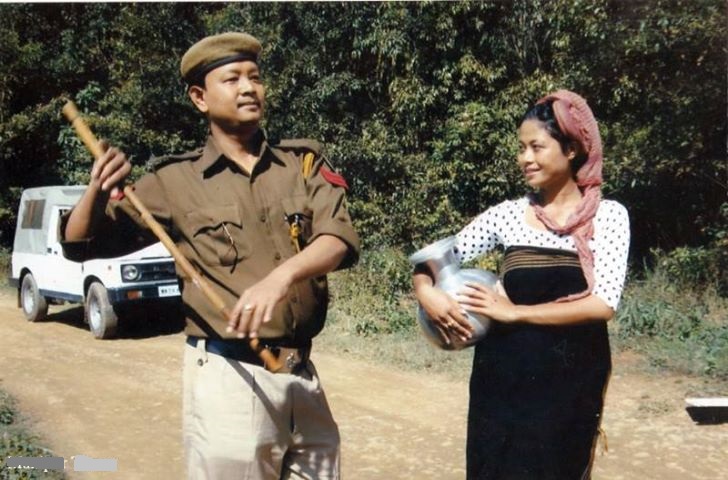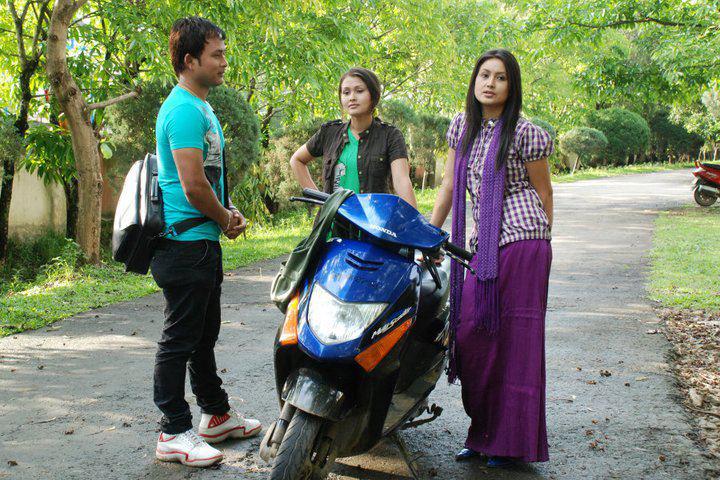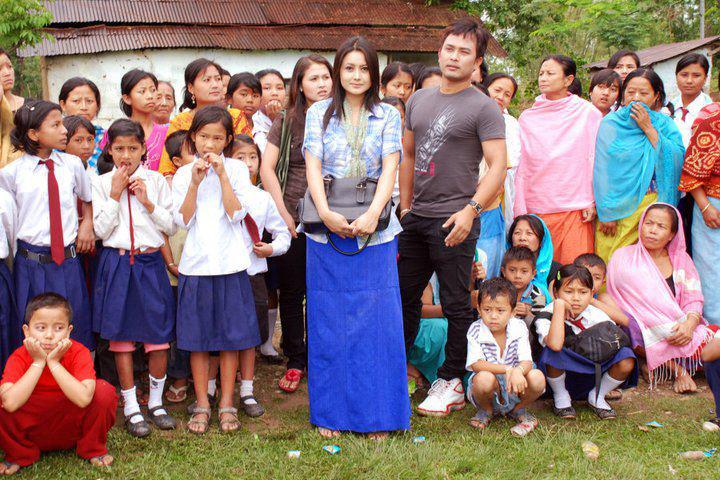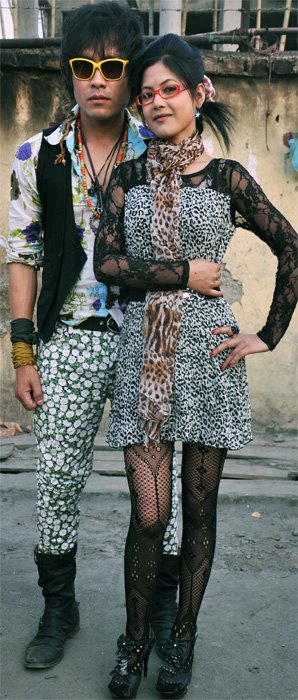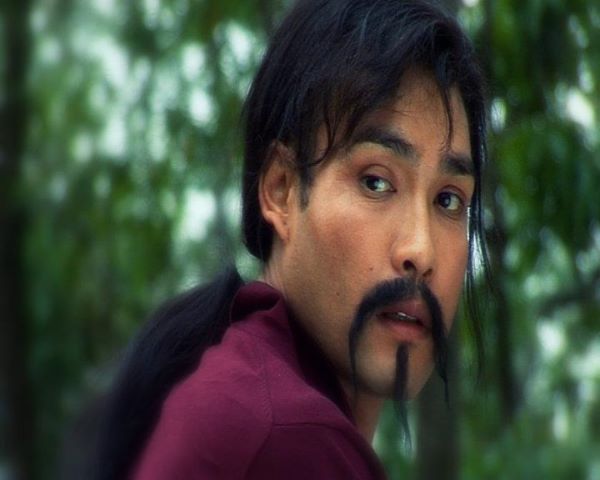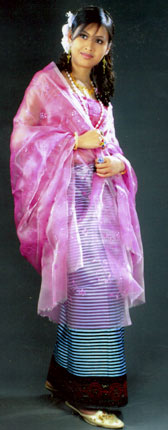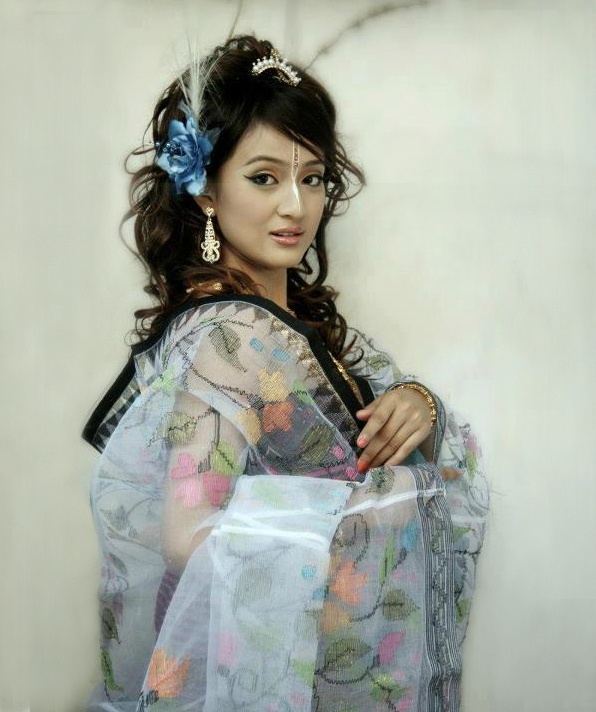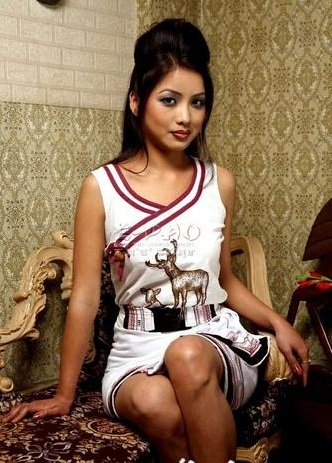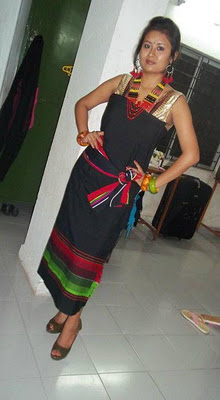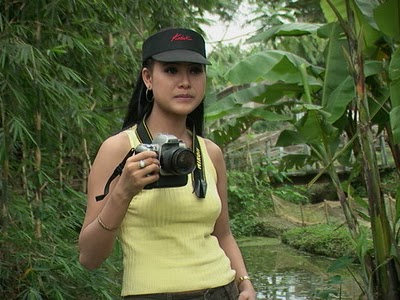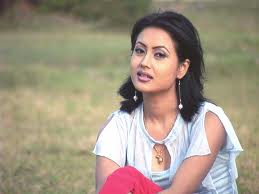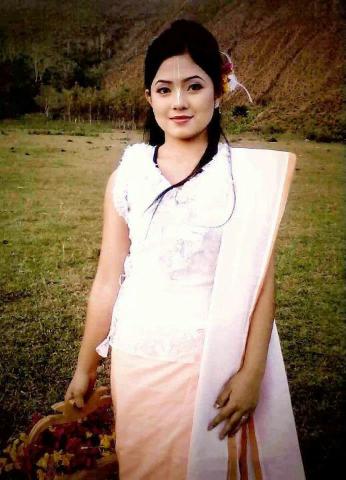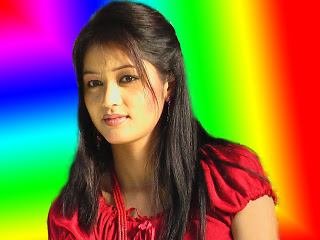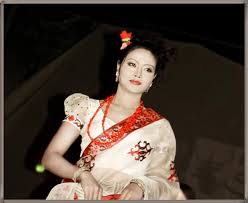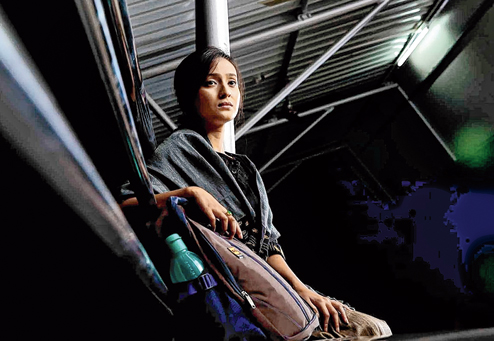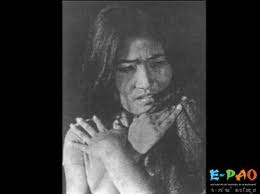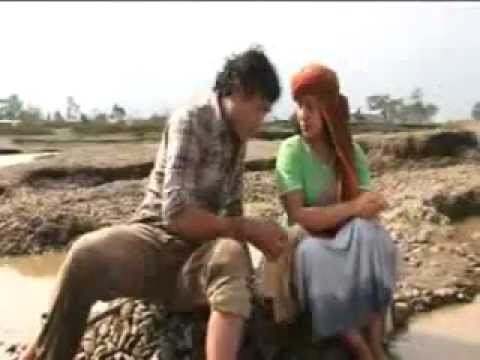Manipuri Cinema
This series of articles has been curated and archived by Mayangs in Jammu and New Delhi
If cinema lovers in Manipur feel that this page is serving a useful purpose |
The authors of articles about Manipuri cinema on Indpaedia
Manipuri Cinema is the most popular page on Indpaedia, followed closely by the page Bala Hijam and then by the page Assamese cinema. Pages about the popular culture of North-East India are are among Indpaedia's most popular. However, Indpaedia also has pages about the history, culture, customs and sportspersons of NE India.
Readers from Manipur (and other north-eastern states) are invited to take the series further through posts on our Facebook page Indpaedia.com. We need articles on Manipuri directors, producers, music directors, singers. lyricists, cinematographers etc. Contributions will be acknowledged as below.
The actual authors of this series of articles on Manipuri Cinema include:
Subhabrata Datta 12 imdb
E-rang! E-pao Movie/Entertainment Channel
IBN Live The other side of Manipur: Film-making and acting
Khelen Thokchom TelegraphIndia Manipuri film to break state barriers / With dubbing & subtitles, Pal hopes to be screened across the region
Meghachandra Kongbam peperonity
Arijit Sen/ The other side of Manipur: Film-making and acting
Khelen Thokchom The Telegraph Sept. 7, 2012.
Ranjan Yumnam Manipuri-Cinema
Note: We have taken care to archive only articles by publishing which their authors will not be deprived of any royalties. All the same, if any author whose works have been archived on Indpaedia.com wants his or her article removed, we may please be asked to do so through the above mentioned Facebook page Indpaedia.com.
Manipuri cinema: Some milestones
Motion Picture or Cinema was first introduced in Manipur in 1920. The first Motion Picture theatres in the state were established in Imphal after the Second World War. Filmmaking in Manipur was pioneered by Shree Govindajee Film Company (SGFC) founded between 1946 and 1947. MAINU PEMCHA (1948) was the result of the first attempt at making films by the Manipuris.
The first full fledged feature film MATAM-GI MANIPUR was screened on the 9th of April, 1972 at Usha Cinema, Friends Talkies in Imphal and Azad cinema in Kakching. With the establishment of Film Society in 1966 , Imphal Cine Club in 1979 and Manipur Film Development Council (MFDC) in 1980, Manipuri Cinema got the required momentum and made an indelible mark both at the National and International level.
Pre-history

Early cinema halls
From Meghachandra Kongbam:
Manipuri audience witnessed silent Indian movies in the 1920s through touring Cinema. Rudimentary and makeshift film show houses were established in Manipur a few years before the second World War. Kasturichand Jain and Ramkumar were the pioneer film exhibitors who ran show houses in Manipur in the pre-war period. Kasturi's show house Manipur Talkies and Ramkumar's show house in Imphal had regular film shows. Towards the end of the War, better organised cinema halls came up. The prominent among them were the MNB Talkies, Victory Cinema and Friends Talkies.
In the beginning of the Indian Cinema, exhibitors were the main patrons in making films. Likewise, the exhibitors in Manipur made their contribution to the film movement. Ayekpam Biramangal, proprietor of Victory Cinema had the dream to produce Manipuri film targeting the Manipuri audience. He along with eleven other shareholders set up Shri Govindajee Film Company in 1946-47 to make the popular play MAINU PEMCHA into film.
Later on, they switched over to making the first venture in Hindi as they were pessimistic about a viable market for Manipuri films. Imphal then had only three cinema halls. The maiden venture met with rough weather from all sides despite spending around rupees one and a half lakhs, and crashed midway. Selected pieces about nine reels of the fourteen reels completed were released uncensored and un-edited in the few cinema halls in Imphal. The tempo naturally died down to a low ebb for many years before a fresh enthusiasm was born long afterwards.
Ranjan Yumnam Manipuri-Cinema adds:
The first cinema screening in Manipur took place in the year 1920, only about two decades after the first world screening at Paris by the Lumiere brothers. The films shown were mainly the foreign films as during this period, any organized effort to make films in Manipur was absent.
Mainu Pemcha, the first film attempted by a Manipuri
Ranjan Yumnam Manipuri-Cinema
the first attempted Manipuri cinema, Mainu Pemcha, was a collaborative effort between Bengalis and the Manipuris. The film was based on a Manipuri play written by Ayekpam Shyamsunder Singh and translated by Bidal Das Panchotiya into Hindi. For reasons of commercial viability, the film had to be made not in the Manipuri language but in Hindi. This reflected the sad reality that still cripples the Manipuri film industry – which is the lack of a big market.
A joint stock company was formed which was christened Shri Govindaji Film production and after raising the funds started shooting from 1948 till April 1949 at the Kali Studio in Calcutta. Directed by Jyoti Das, the cast included both Bengalis and Manipuri actors with the latter in numerical preponderance. After completing a substantial part of the film in Calcutta, they had to come back to Manipur as some scenes required shooting in Meitei Yumjao (traditional Manipuri house).
An interesting thing happened in Manipur. The public who were already thrilled with the prospects of seeing their favourite play on the celluloid requested Biman Chatterjee (playing a Manipuri character in the film) to demonstrate his acting skills at the Rupmahal Theatre, which he obliged.
Unfortunately the film could not be completed due to financial difficulties. In a last ditch attempt to revive the film, the producer approached the Manipuri Maharaja to support the film. The Maharajah was favourable to the idea but historical circumstances did not allow him to devote attention to the film. 1949 was a chaotic year coinciding with the end of the World War II, and for Manipur, the question of her political existence hanged in uncertainty. The question of whether the Kingdom of Manipur should join the Indian Union generated a lot of public debate with even the institution of monarchy perched precariously in the line of fire. It was a momentous era that triggered the insurgency movement over the issue of the legitimacy of the “annexation” of the Manipuri Kingdom into the Indian Union by Sardar Patel’s “clever handling”.
The 1960s, '70s and '80s
The 70s was a successful decade in the Manipuri Cinema. A Manipuri film Olangthagee Wangmadasoo directed by Aribam Syam Sharma was as huge a blockbuster as Sholay. The 1980s brought a shift in Manipuri culture, led by Aribam Syam Sharma. “He abandoned his Bollywood-style song [and] dance, and he went on to make a very serious film named Imagi Ningthem,” he said. The 90s saw a decline in Manipuri cinema and “it was complicated by the emergence of very violent confrontations and multi-layered conflict in Manipur.” This is when Hindi films were banned. He further talked about the emergence of digital films in Manipur.
Film societies
The first film society of Manipur, Film Society Manipur, was established in 1966.
It organised both Indian and foreign film festivals in the State and discussions on films were organised regularly. It will not be an exaggeration to say that the first Manipuri feature film Matamgi Manipur which bagged the President's Gold Medal in the National Film Festival, was the good outcome of the film society movement.
In 1979 another film society, Imphal Cine Club was set up and it played an active role in the promotion of good films through regular screening of good films and holding film festivals, seminars and appreciation courses. (--Meghachandra Kongbam)
Ranjan Yumnam Manipuri-Cinema adds: the cinema movement got strengthened further with the establishment of Film Society in 1966, Imphal Cine Club in 1979 and Manipur Film Development Council in 1980.
The seventies: The film society movement took root in Manipur and got itself affiliated to Indian Federation of Film Societies which had its headquarters in Calcutta.
The first Manipuri film to be actually released
Bimol Akoijam said about how film screening entered Manipur and how the Manipuris got into film-making. “The thought of having a Manipuri feature film was born to us in the late 1960s and it became a reality in 1972 and the first full-length Manipuri feature film was screened called Matamgi Manipur (Modern day’s Manipur),” he said.
The simultaneous release of Matamgi Manipur at Usha Cinema and Friends Talkies in Imphal and at Azad Cinema in Kakching on April 9 in 1972 marked the beginning of an epoch in the history of Manipuri cinema awakening the Manipuri film goers into the reality of a Manipuri feature film for the first time. It was a black and white feature film, which may be an outdated one, where the colour films dominated the Indian cinema.
To make the film, the equipments and technicians where engaged from outside Manipur. Even the film director, Debkumar Bose, too. Thanks should be accorded to the bold producer Karam Monomohan who never looked back in pioneering the filmmaking without visualising any loss or gain onto the film. The colour era came only in 1984 when the first coloured feature film Langlen Thadoi directed by M.A. Singh was released. (--Meghachandra Kongbam)
Ranjan Yumnam Manipuri-Cinema
K. Monomohan took upon himself the task of making the first Manipuri feature film – Matamgi Manipur (Today’s Manipur). Like Mainu Pemcha, it was directed by a Bengali director, Devkumar Bose, son of the celebrated filmmaker Devki Kumar Bose. Adapted from a play Tirth Jatra written by by Arambam Samarendra, the film had an all-Manipuri cast, and it was in this sense a more indigenous venture than Mainu Pemcha.
The film began shooting in December 3 1971 and was wrapped up in January 1972. It was screened on 9th April, 1972 at Usha Cinema, Friends Talkies in Imphal and Azad Cinema.
Considering that it was the first experience for the Manipuri actors before the camera, they performed beyond expectations. This was proved when the two leading actors Rabindra Sharma and Y. Roma received the Rashtriya Chalchitra Purashkar, which is better known as the President Award.
It must have been a record for any regional film industry for its first film experiment to be getting recognised in such a manner. “The Manipuris are natural artistes; they are gifted with the talent of arts, music and dance,” writes RK Bidur, a founder member of the Manipur Cine Club and president of the Manipur’s Film Critics Association, referring to the success of the Matamgee Manipur.
Manipuri producers
Only a few who luckily got nominal returns from their films are making further ventures. Manipur has so far 18 film producers. Of them, only a few like G. Narayan Sharma, K. Ibohal Sharma, M. Nilamani, Thouyangba Thoungamba are still in the field, gain or no gain.
How Manipuri cinema reached the rest of India
Ranjan Yumnam Manipuri-Cinema
The big moment for the Manipuri cinema came in 1982 when Aribam Shyam Sharma's Imagee Ningthem (My Child, My Precious) won the GRAND PRIX at the NANTE INTERNATIONAL FILM FESTIVAL, the first Indian film to achieve the distinction. Since then many Manipuri films have won National Film awards,
How Satyajit Ray got floored...
When news about the Manipuri film Imagee Ningthem being critically acclaimed at the Nante International Film Festival (in France) reached India, the reigning kings of the Indian cinema like Satyajit Ray, Mrinal Sen and others were shell-shocked. They had never heard of Aribam Shyam Sharma, the director of the film nor had they watched any Manipuri film of any consequence in their life.
The Bengal Film Society eventually contacted the makers of the Imagee Ningthem to screen the film in Calcutta. “It was an honour for us. We stopped regular shows in Imphal so that we can take the reel to other cities from where requests have also come in for screenings,” Mr K. Ibohal Sharma, producer of the Manipuri feature film, Imagee Ningthem, recalls.
Once in Calcutta, it was the turn of the Manipuri filmmakers to get shocked by the reaction of the audience. It was clear the audience didn’t appreciate the film. The Manipuris didn’t exactly expect a standing ovation, but they were also not prepared for boos and sneers from the Bengali crowd not used to the alien language and characters on the screen. “People disappeared from the hall faster than the blink of the eye, and those who remained were a handful of foreigners.
“MK Binodini, the storywriter, who came with high hopes was literally reduced to tears and requested me to take her home,” he recounted. But before they went back to the hotel to retire for the night, they decided to take a walk to the venue of the national film festival being held in the city just for the heck of it and in part to drown away their bitter experience at the theatre (Gorky Sadan). To their surprise they found out that their film was declared the best feature film in the national panorama. Tear of humiliation turned into tears of joy instantaneously.
How did the doyens of the Indian cinema size up the film? “They watched through the film without saying anything and left without saying anything. They were clearly speechless,” Mr Sharma recalled.
The film was invited to participate in major international film festivals at New York and Tokyo.
This was in 1982. In the same year, Imagee Ningthem won the Grand Prix at Nante International Film festival. Aribam Shyam Sharma had joined the international mainstream even before making it big in the national stage. His success story mirrors the trajectory of the evolution of the Manipuri Cinema.
Machu Cinema
A castle of digital dreams
Ranjan Yumnam Manipuri-Cinema
Machu Cinema is at Samurou, about 15 Kms from the Imphal city. Open to public [in 2006], it is becoming one of the most frequented spots for the young love birds. There are three shows daily, and on weekends, it has one more show in the evening. The last show begins at 7 pm, making it one of the few commercial shops that's opened that late. In Manipur, life ends 5 pm. Machu means colour. True to its name, the theatre has added a little bit of colour to life in the violence ridden Imphal valley.
Manipuri films on celluloid
'On celluloid' means as opposed to digital films, which are the mainstay of Manipuri cinema in the 21st century
Year Title Producer Director
1972 Matamgee Manipur, Karam Manmohan Devkumar Bose
1972 Brojendrogee Luhongba, SN Chand SN Chand
1974 Lamja Parsuram, G Narayan Sharma A. Shyam Sharma
1974 Ngak-e-ko Nangse, Wangkhem Basanta SN Chand
1976 Saphabi G Narayan, Sharma A. Shyam Sharma
1979 Khuthang Lamjel, Thongam Haridas GC Tongbra
1979 Olangthagee Wangmadasu, G Narayan Sharma A. Shyam Sharma
1981 Imagee Ningthem, K Ibohal Sharma A. Shyam Sharma
1981 Khonjel, M Nilamani M Nilamani
1981 Wangma Wangma, Durlav L Banka Sharma
1983 Sana Keithel, Thoudam Doren MA Singh
1983 Paokhum Ama, Film Div. of India A. Shyam Sharma
1984 Thaba, Khaidem Sakhi Devi K Ibohal Sharma
1984 Langlen Thadoi, Khaidem Sakhi Devi MA Singh
1984 Yairipok Thambalnu, H Gehendra L Banka Sharma
1986 Iche Sakhi Thoudam Doren MA Singh
1988 Kombirei, G Narayan Sharma G Narayan Sharma
1990 Isanou, Gauhati Drsn A Shyam Sharma
1990 Engallei, M Kumarjit RK Kripa
1990 Paap, M Nilamani M Nilamani
1992 Khonthang, Thoungamba Oken Amakcham
1993 Sambal Wangma, Sobita K Ibohal Sharma
1993 Thambal, Vishnu/Surjakanta RK Kripa
1993 Madhavi, K Bhupendra L Banka
1994 Mayophigee Macha, Thouyangba Oken Amakcham
1995 Sanabi, NFDI/Drdrsn A. Shyam Sharma
1995 Khamba Khamnu, Ch Shyamcharan Ch Shyamcharan
1996 Kanaga Hinghouni, Chand Heisnam Chand Heisnam/Vishwamitra
1997 Sanamanbi Sanarei, G Narayan Sharma G Narayan Sharma
1997 Khamba Thoibi, M Nilamani M Nilamani
1997 Chinglensana, Th. Binapani Rajen Meitei
1997 Iraal Oirage, Chand Heisnam Vishwamitra/Kishore Kr
1997 Yenningtha Amada, M Nilamani/Ashwini M Nilamani/Ashwini Kr
1998 Amambasu Anganbani, Chand Heisnam Vishwamitra/Kishore Kr
1998 Thawaigi Thawai, Thoungamba Thoungamba/Thouyangba
Manipuri Cinema: 1972-2001
Manipuri Cinema In The Last Three Decades
By Bit Irom
Manipuri films have started gaining its momentum with a force since imposition of blanket ban on the screening of Hindi films in entertainment houses in the state. Screening of the Hindi movies have come to a grinding halt in this volatile border state despite reiterated appeals made by the successive Chief Ministers. This move has given fresh impetus to the film producers, artists and film lovers in the state. Proscribed Revolutionary People's Front, (RPF) the political wing of the banned People's Liberation Army (PLA) imposed the blanket ban on screening of the Hindi movies and other form of Hindi related entertainment programmes since November last year.
In the annals of the Manipuri film industries, 2001 will be yet another glittering chapter. Makhonmani Mongsaba's Manipuri feature film "Chatledo Eidi" has bagged the 48th national film award (regional language) for best feature film. This film retells a complex love story in a simple manner depicting of the natural beauty of the state. "Chatledo Eidi" is the first Manipuri feature film to win a national award in five years, the last such film being internationally reputed Aribam Shyam Sharma's Sanabi in 1996.
Manipur has completed three decades of its film annals with 54 feature films and 35 documentary/non feature films. "Matamgi Manipur" is the first Manipuri feature film. During this period of thirty years film industries in Manipur bring 9 international awards and 10 national awards.
Compared with the multi crore films in Mumbai and elsewhere in the country, the average investment for a film in Manipuri would be around Rs 15 lac. However, the people of the region should feel proud of the quality of Manipuri films of low budget evident from bagging several international and national awards.
In 1982 Imagi Ningthem (My precious son) bagged the Grand prix awards for best feature film in the festival Des Three Continents at Nanes in France and Best Child Actor award of National film festival - 1982. Another Manipuri Feature film - Ishanou won a special mention award for the Main actress - Selection officially in the Cannes international film festival, France, in the section Uncertain Reard 1991. This film also won the National award in 1991. Manipuri short film Pebet begged the Best Short Film (Non Fiction) in the international short film festival held in Calcutta (now Kolkata) in 1985.
The non feature film Sangai, the dancing deer of Manipur, bagged 5 awards for (1) Artistic Excellence in choreograph (2) Interpretation of an Animal's Spirit (3) delicate depiction of wildlife (4) Fostering cultural perspective of conservation (5) Inter relationship between animals and human being in the 12th International wildlife film festival of 1989 held at Montana. In the same festival, the Deer on the Lake, 16 mm documentary film won another merit award.
The need of film production, acute shortage of equipment and trained hands have been obstacles in the way of production of quality films in Manipur though several feature films were selected in the Indian Panorama (non feature film category). Manipuris give more stress on production of good films thematically and aesthetically.
The state Government has a film policy for giving financial assistance to film producers on the recommendation of Manipur Film Development Corporation Ltd. The quantum of assistance limited ranging from Rs 1,00,000/- to Rs 15,000/-. MFDC Ltd. came into existence on May one 1987 with objective of developing film industry in the state. It is engaged in setting up film laboratory, studio, production of Manipuri films, instituting awards and festivals for establishing institutes in film technology for helping film societies etc.
There is no state Government's plan/policy for giving financial assistance/loan for construction of cinema theatre, so far. There is no enough infrastructure of film production in terms of equipment, money (directly or indirectly given by the state Government) Studio, laboratory etc. Most of the Manipuri films are exposed, printed, processed and re- recorded at Kolkata or Chenai or Mumbai. These make more expenditure in transportation and communication. The overhead expenditure and capital invested become bigger.
The box office return of Manipuri films cannot make good the investment by producers. There is pathetic audience response to Manipuri films and the market inside and outside the state is so limited. Income derived from the exhibition of the films is generally not upto the mark. The producers cannot exhibit their films for a reasonable long period of time. Modern young cinegoers are pulled by commercial films. The largest cinegoers are the young peoples who are more interested in Hindi and English films.
More over, there is no concession in hiring cinema theatres for screening Manipuri films. When there is no profit in the box office, the exhibitors reject the screening of local/Manipur films putting the producer always at a disadvantage. There is no system of refund of entertainment tax to the producers in Manipur and the few benefit they would have got has been denied to them.
Manipur also needs trained and professional cine artists. Most of the cine artists are trained by the producers themselves. In case of women artists, sometimes, they entered into family life even before the completion of the film or they enter the same after acting one or two film(s). Hence every producer has to train artists at the time of production of new film de nuvo.
2012
In 2012, Leishangthem Tonthoi, who had done 13 films by then, was the rising star of Manipuri cinema. That year, Tonthoi received the Rajat Kamal award for Best Supporting Actress at the 59th National Film Awards.
More films were being shot and Manipur was making its mark through low budget films.
Manipuri cinema 2013
Notable films
CM Munaan
Producer: Ranbir Thouna (who had just had a success with Kaorage )
Starring: Bonny .......
Dir: Chou-En-Lai
"Eidee Kadaida"
Manipur's entry for the 61st National Film Awards
National film awards
National film awards 2013 (for films made in 2012)
Manipuri film director Aribam Syam Sharma won an award each in the feature and non-feature categories, a rare feat for a filmmaker. Sharma had won in both the categories in the 1991 National Film Awards as well.
Sharma's feature film 'Leipaklei' won a Rajat Kamal and Rs 1 lakh for the best Manipuri regional film. His 'Manipuri Pony' won in the best exploration and adventure film category (including sports) in the non-feature film section for which he will be awarded a Rajat Kamal and Rs 50,000.
Manipur State Film Festival awards
The 8th Manipur State Film Festival awards were conferred on
Yaishkul Pakhang Angaoba (feature) directed by Home D`wai and
Manipuri Pony (non-feature) directed by Aribam Shyam Sharma.
National Competition
Films selected for the National Competition Section of 13th Mumbai International Film Festival (MIFF) to be held in 2014
My Grandpa`s Home (non-feature) directed by Alexander Leo Pou and produced by the Films Division, Mumbai
Romi Meitei’s Snake under the Bed (Khangkhada Lin) (Short Fiction)
Kh Bishwamitra Singh’s The Skiff (Short Fiction)
An era of mediocrity?
What Is Ailing Manipuri Cinema? Mediocrity?
December 28, 2013 by Imphal Free Press
By Joshy Joseph [1]
Most of the names established in the serious Manipuri cinema today are getting finances from the commissioned programmes of Doordarshan for fiction and from Films Division for non-fiction films.
Film Forum acts as a censor within a censor for a Manipuri filmmaker, named Film Forum. It is coordinated by filmmaker Suryakanta. It is 'recognised by the central censor board and appeared contented with the power of making or marring filmmakers. Film Forum is doing a commendable job in nailing the piracy business,' wrote Joshy Joseph kanglaonline 'Manipuri filmmakers have to be very careful about the wandering Manipuri Ponies in Imphal streets while shooting, to escape the traumas or Kafka doses from the central censor board. He will also have to adhere to the atmospheric pressures of the powerful directives from the Film Forum. Poor fellow is jammed like the common man in Manipur, who is caught between the State and non-State actors.'
Help needed
The details given below, 2014 onwards, have been AI- sourced from the Internet and we are not certain about their authenticity. Please help Lovers of Manipuri Cinema by pointing out mistakes and by sending the correct information as messages to the Facebook community,
Indpaedia.com.
All information used will be gratefully acknowledged in your name.
2014
Meerang Mahum
Lyricist,editor & director : Ajit
Eegi Khongul
2015
Lam-gi-Yai directed by M. Oken
Phum Shang directed by Sonia Nepram
2016
Aribam Syam Sharma directed by B.iju
Eche Thaba directed by Oinam Gautam Singh
2017
Bobo directed by Ch. Brahmacharimayum
2018
Nungshiba Lhouvum directed by Maisnam Maisna
Imagi Ningthem directed by Aribam Syam Sharma (digitally restored version)
2019
Sangai: The Dancing Deer of Manipur directed by Gautam Halder
Loktak Lairembee directed by Haobam Paban Kumar
2020
Sanaleibak Manipur directed by Aribam Syam Sharma
Eibu directed by Romi Meitei
2021
Manglanda Mama directed by Sonia Nepram
2022
Nangna Kappa Pakchade directed by Khaidem Bisharjit Singh
Mayang Marmar directed by Biju
Documentary films
Manipur's documentary films, too, are low budget. Unlike Manipuri cinema, they revolve around social and political issues.
AFSPA 1958
Dir: Bachaspatimayum Sunzu
This film, which is about an issue uppermost in the minds of many Manipuris, was received favourably by liberal audiences in the rest of India as well.
Real
Dir: Bona Mesihnam.
The film about HIV positive persons has been included by New York's Museum of Modern Art in its archives.
National and International awards
Ranjan Yumnam Manipuri-Cinema
Meghachandra Kongbam writes: Out of the first 28 feature films produced, nine films won national awards. A statistical view reveals that every third film produced in Manipur has won a national award. By and large, Manipuri films have surpassed other regional films in terms of quality inspite of the low costs and other handicaps.
out of the first 28 non-feature films produced so far, 7/8 documentary films of Syam Sharma brought laurels to Manipur in national as well as international levels.
In the major international film festivals, Syam Sharma's Imagi Ningthem, Paokhum Ama, Ishanou and Sanabi, M.A. Singh's Sanakeithel, K. Ibohal's Sambal Wangma and Oken Amakcham's Khonthang were screened.
Ranjan Yumnam adds: The nine Manipuri films that had bagged prestigious National Awards. The following Manipuri films were also screened in celebrated International Film Festivals around the globe.
The following manipuri films were shown in Film Festivals on International level.
1. IMAGEE NINGTHEM
2. PAOKHUM AMA
3. ISHANOU
4. SANABI
5. SANA KEITHEL
6. SAMBAL WANGMA
7. KHONTHANG
The first Indian Film to get the Golden Montgolfiere at the "Nantes Three Continents Festival" was the Manipuri Film IMAGEE NINGTHEM (My Son, My Precious) directed by Aribam Syam Sharma and scripted by MK Binodini. Eight Year old Leikhendra Singh bagged the BEST CHILD ACTOR in India awards in the year 1982.
Pavan Kumar, an AAFT graduate won the applause of the audience and jury with his heart wrenching and brutally honest documentary that brought to the screen images of paramilitary forces' excesses perpetrated on civilians in Manipur under the shield of Armed Forces Special Powers Act (AFSPA). The documentary won the Critic's award at the Mumbai International Film Festival and was also critically acclaimed at the Toronto Film Festival, Karachi Film Festival and a slew of other international platforms.
The great films of the Golden Era
MFDC
Note: In the case of the 7 Manipuri films rated highest by readers/ users of imdb.com, the average of imdb readers' rating has also been indicated.
Matamgi Manipur
1. Matamgi Manipur, 1972.35 mm B&W. Produced by Karam Monomohan for K.T.Films Private Limited. Based on a story by Arambam Samarendra. Screenplay and direction: DebKumarBose. Music: Aribam SyamSharma. Lyrics: Phulendra and M.K. Binodini. Editing: Madhu Banerjee. Sound recording: Bani Dutta. Playback singers: A. Kamala, Arambam Jamuna and A. Budhachandra.
8.1/10: readers’ average rating on IMDB.com.
Cast: G.Ravindra Sharma, Yengkhom Roma, Kangabam Birababu, Rashi, Indira, Beda, Kangabam Tomba, Arambam Lokendra, Aribam Syam Sharma, Amujao and Baby Ameeta with Joshi, Dr.Nara, Mangibabu, Bishwambhar, Landhon, Imo, Ibohanbi, Ashokekumar, Boinao, Momon, Binodkumar, B.N. Patnaik, P. Banerjee, Kanonbala, Bimola, L. Tamani, Memma and Purnamala. The film bagged the Presidents Medal in the 20th National Film Festival in 1972.
Brojendragee Luhongba
2. Brojendragee Luhongba, 1972. 35mm B&W. Produced by S.N.Chand for Sajatia Pictures. Based on a story by Lamabam Kamal. Direction, Screenplay and Music: S.N.Chand. Playback singers: S.N.Chand and Arati Mukherjee. Audiography: Anil Nandan.
Cast: S.N. Chand, Romobala Devi and others. The film bagged the Best Screenplay Award in the first Manipur State Film Festival in 1984.
A classic Manipuri film
Lamja Parsuram
3. Lamja Parsuram, 1974. 35mm B&W. Produced by G.Narayan Sharma for N.S.Films. Based on a story by Gitchandra Tongbra, Padmashree.
Direction & Music: Aribam Syam Sharma.
Script: E. Dinamani Singh.
Lyrics: Phulendra. Playback singers: Shyam, KhunJoy, A.Kamala. Camera: Sankar Banerjee. Editing: Madhusudan Banerjee. Sound: Mani Rata. Make-up: Debi Haldar.
Cast: Kangabam Tomba, Yengkhom Roma, Beda, Jugeshwar, G.Narayan Sharma, Deven, Manglem and Rashi.
On imdb's top 7, but without a rating.
Ngak-E-Ko Nangshe
4. Ngak-E-Ko Nangshe, 1974.35mm B&W. Produced by Wangkhem Basanta for Poonam Films. Direction: S.N.Chand. Music: N.Pahari. Playback singers: N.Pahari, Y.Bilashini and Arambam Jamuna.
Cast: Y.Mangibabu, Rajani.
Saphabee
5. Saphabee, 1976. 35mm B&W. Produced by G.Narayan Sharma for N.S.Films.
Direction & Music: Aribam Syam Sharma.
Story & Screenplay: S.Bormani. Dialogue: G.Joykumar. Art: Swarnarjeet & Birjeet. Editing: Madhusudan Banerjee. Camera: Deojibhai & Madhusudan Banerjee. Sound: Amulya Das. Make-up: Sambhu Das.
Playback singers: Shyam, KhunJoy, A.Jamuna, Leibakmacha, Ibetombi and Bimolata.
Cast: Kangabam Tomba, Subadani.
The film bagged the Rajat Kamal for Best Regional Film in the 24th National Film Festival in 1976.
On imdb's top 7, but without a rating.
Khutthang Lamjel
6. Khutthang Lamjel, 1979. 35mm B&W. Produced by Thongam Haridas for A.T.Films. Direction, story & screenplay: GitchandraTongbra. Music; N.Pahari. Playback singers: N.Pahari, Geeta, Y.Bilashini and P.Chandrakumar.
Cast: O.Birla, Sobita Devi.
Olangthagee Wangmadasoo
7. Olangthagee Wangmadasoo, 1979/ 80. 35mm B&W.
Produced by G.Narayan Sharma for N.S.Films.
Direction: Aribam Syam Sharma.
Story & screenplay: M.K.Binodini. Music: Shyam & Khun Joy.
Playback singers: KhunJoy, Hamom Naba, A.Jamuna and A.Shyam. Camera: Deojibhai Pandhiar. Sound: Tomba Sharma. Make-up: Sambhu.
Cast: Kangabam Tomba, Yengkhom Roma, Rashi, Keshoram, Tondon and Joykumar.
The film bagged the Rajat Kamal for Best Regional Film in the 27th National Film Festival in 1980.
6.7/10: readers’ average rating on IMDB.com.
Imagi Ningthem
8. Imagi Ningthem, 1981/2.
35mm B&W.
Produced by Kongbrailatpam Ibohal Sharma for X-Cine Productions.
Direction: Aribam Syam Sharma.
Story & screenplay: M.K. Binodini. Camera: K.Ibohal. Editing: Madhusudan. Music: Khundrakpam I Joykumar.
Cast: Rashi[d?], Ingudam Mangi, Bhubaneshwari, Indrakumar, Jamini, Memcha, Gayatri and Master Leikendra Singh, Leikhendro, Rashid.
8.8/10: readers’ average rating on IMDB.com.
Winner of Many National and International awards.
It is Imagi Ningthem (1981) which propelled Manipuri cinema on to the menu of Indian and international film lovers with. This film narrates with immense freshness and simplicity the story of a little illegitimate boy whom a humane teacher devotes himself to get adopted by the wife of his natural father. A teacher comes to a village and an old man asks her to tutor his grand son who is sickly all the time... (110 mins.)
The film was awarded the prestigious Grand Prix at Nantes International Film Festival in France in 1981. It bagged the Rajat Kamal for Best Regional Film in the 29th National Film Festival in 1982. It also bagged the National Award for Best Child Actor (Master Leikhendra). The film participated in the New Directors/New Films at New York, and in several other international film festivals at Denver, Locarno, MOMA (New York), London, Los Angeles, Toronto, Montreal and Hong Kong. The most notable of these international film festivals was the Festival of Festivals at Toronto in 1983. The film was screened in Filmotsav *82 at Calcutta. The film also bagged the Best Feature Film award in the first Manipur State Film Festival in 1984.
Khonjel
9. Khonjel, 1981. 35mm B&W. Produced by Moirangthem Nilamani Singh for Anjana Films. Direction and screenplay: M. Nilamani Singh. Lyrics: Thangjam Kora. Music & playback: N.Pahari. Costume & set designer: M.Ibempishak. Cast: Moirangthem Ashwinikumar, L.Subadani.
Wangma Wangma
10. Wangma Wangma, 1981. 35mm B&W. Produced by Durlab for Eastern Star Films. Direction & screenplay: L.Banka Sharma. Story & Lyrics: L.Shyamsunder Sharma. Music: A.Shyam Singh. Playback singers: A.Shyam, Y.Bilashini.
Cast: Iboyaima, Kanan, Sanayaima.
11.
Sanakeithel, 1983
35mm B&W. Produced by Thoudam Dorendra for A.T.B.Films International.
Direction, screenplay & editing: M.A.Singh.
Story & Music: N.Pahari.
7.8/10: readers’ average rating on IMDB.com. (131 mins.)
Cast: Memi, Master Toni, Somo Anawali, Shanawas, Upen, Mahaobi, Ibeyaima and Lalit.
The film bagged the Rajat Kamal for Best Regional Film at the 31 st National Film Festival in 1984.
12.
Paokhum Ama, 1983
16mm colour. Short feature. Produced by Films Division of India. Direction: Aribam Syam Sharma. Story & screenplay: M.K.Binodini. Cinematography: K.Ibohal & Daoji Sharma.
Cast: Kangabam Tomba, Yengkhom Roma and others. The film participated in the Tyneside International Film Festival in 1983.
13.
Thaba, 1984
16mm B&W. Short feature. Produced by Kh.Sakhi Devi for Kay Pee Films International. Direction: Kongbrailatpam Ibohal Sharma.
Cast: R.K.Sushila, Prafullo.
14.
Langlen Thadoi, 1984.
35mm colour. The first full-length feature film in Manipuri. Produced by Kh.Sakhi Devi for Kay Pee Films International. Screenplay & art Direction: Khaidem Promodini. Music director: S.Tijendra. Audiography: Subhas. Camera: Suresh Patel. Playback singers: W.Chandrasakhi & S.Tijendra. Direction & editing: M.A.Singh.
Cast: Wangkheirakpam Chandrasakhi, Kongbrailatpam Tejmani and Moirangthem Lalit.
15.
Yairipok Thambalnu, 1984.
35mm B&W. Produced by H.Gehendra Singh for Liberty Films. Direction: L.Banka Sharma. Story: M.Ramcharan. Screenplay: Sanatomba Rajkumar. Lyrics: B.Jayantakumar. Music director: N.Pahari. Playback singers: N.Pahari, A.Kamala.
Cast: Kangabam Birababu, Hemabati, Rajani, Ch.Nilbir, G.Robindra, L.Babu, Robir, Ibeyaima, Ibemni, Ibemhal, Biren, Tarakumar, Kh.Bihari, Brojen and Keshoram.
16.
Iche Shakhi, 1986
35mm colour. Produced by Thoudam Dorendra for A.T.B.Films International.
Co-Direction: Th.Dorendra & Sanakhya Ibotombi. Story: Th.Dorendra. Screenplay: S.Ibotombi. Music director: Hamom Naba.
Cast: Sakhitombi, Ibochouba, Imobi, Oken Amakcham, Inakhunbi.
17.
Kombirei, 1989.
35mm colour. Written & produced by G. Narayan Sharma for N.S.Films. Direction & screenplay: G. Narayan Sharma. Lyrics: Konsaba Ibochou. Music: Aribam Syam Sharma. Playback singers: A.Shyam, KhunJoy and A.Jamuna.
Cast: Diya, Nirmala, Kanan, Nabakanta, Keshoram, Tondon, Chaoba, Chandro, Deben, Bidhu, Shettu, Nabachandra, Maheswar, Naresh Sharma, Preeti, Kabita and others.
18.
Ishanou, 1991.
35mm colour. Produced by Guwahati Doordarshan.
Direction & Music: Aribam Syam Sharma.
Script, screenplay and costume: Ishanou M.K.Binodini Devi. Sound: A.Shantimo Shrama & Durgadas Mitra. Editing: Ujjal Nandy. Cinematography: Girish Padhiar. Assistant cameraman: Ph.Sharatchandra Sharma.
9.2/10: readers’ average rating on IMDB.com.
Cast: Anoubam Kiranmala, Kangabam Tomba, Manbi, Dhiren, Baby Molly and Baby Premita.
But the masterpiece of AS Sharma and one of the most original films of Indian cinema is indisputably Ishanou (1990). This amazing and spellbinding film presents a fascinating exploration off the grey area, which exists between the predictable human behaviour and the world of magic and mystery, until one of them prevails over the other. In a small village of Manipur, Thampha, the young and taciturn wife of Dhanabir, works in an office and the couple lead a routine life with their two children. But when her husband takes her for a ride on a two wheeler through the hilly country to amuse her, she has dizzy spells. She is also seized from time to time by convulsions and she begins to wander at night.
One night she reaches the house of an exclusively female and matriarchal religious sect of Maibis, possessors of the privilege of ritual invocations to the gods of the ancient pantheon of Manipur. There are scenes in the film which treat the audiences to the vision of marvellous and colourful Indian dances. But her sickness does not belong to those, which medicine or even magic can cure. Her possession is of another nature, sacred, in fact, the direct search for the goddess Maibi. Thampha, like in a daydream, leaves everything to become an initiate of the sect. At the end of the film she meets her husband, who has remarried and her daughters, two people from whom she is now alienated, in the truest sense of the term.
The harmony in a family in the Manipur Valley, is disrupted by the sudden transformation of a gentle person. (94 mins.)
The film bagged the Rajat Kamal for the Best Regional Film in the 38th National Film Festival in 1991 - The film was screened in the Indian Panorama section of the 22nd IFFI in 1991. The film bagged the Special Mention for the Main Actress (Anoubam Kiranmala). The film was the official selection in UN CERTAIN REGARD at the Cannes International Film Festival in 1991. The film participated in international film festivals at London, Seattle, Singapore, Toronto, Vancouver, Fribourg, Hawaii and Nantes. The film also bagged the Best Feature Film Award in the second Manipur State Film Festival in 1994.
19.
Ingallei, 1990.
35mm colour. Produced by M.Kumarjit for M.K.Films. Story: Tejkumar. Direction & screenplay: R.K.Kripa. Music: KhunJoy. Playback singers: A.Shyam, A.Bimola.
Cast: Diya, Deben, Babita.
20.
Paap, 1991.
35mm colour. Written & produced by Moirangthem Nilamani Singh for Anjana Films. Direction: M.Nilamani Singh. Co-producer & Associate director: M.Ashwinikumar. Lyrics: Thangjam Kora. Music: Aheibam Shyam. Playback singers: A. Shyam, A. Jamuna and Nabachandra Sharma. Cinematography: Baidanath. Audiography: Valmiki. Editing: Prakasfi Kothare. Dialogue: Ibempishak Ningthoujam.Make-up: Swarnajit.
Cast: M.Ashwinikumar, Sunanda, L.Nirmala, Khonikar, Radharani, Medhajit, Rebati, Laiit, Master Tome, Master Amirkumar, Gulap Babu, Ibobi and Nilamani Sharma
21.
Khonthang, 1992.
35mm colour. Produced by Thouyangb Thoungamba for P.K.Films. Direction: Oken Amakcham. Story: R.K.Banna. Screenplay: N.Rajen. Camera: L.Su-jakanta. Sound: Deepak Roy. Editing: Subrato Lahiri. Lyrics: Thangjam Kora & Kh.Pramodini. Music director: Thoungamba. Playback- singers: Devala, Thoungamba. Make-up: Magha. Lights: Brajachand, Surendra.
Cast: Devala, Rishikanta, Oken, Rajen, Kishorjit, Gunabati, Matouleibi and Master Boris. The film was screened in the Indian Panorama section of IFFI 1993.
22.
Sambal Wangma, 1993.
35mm colour. Written & produced by Ph. Sobita Devi for X-Cine Productions.
Direction, screenplay & lyrics: Kongbrailatpam Ibohal Sharma.
Music: Khun Joy. Camera & editing; K.Bimol. Sound: A.Shantimo. Art: Kishorjit. Playback singers: KhunJoy, A.Bimola.
Cast: Khun Joykumar, Parvati, Star Kamei, K.Jiten Sharma, Ranibala, Lamaru Kamei, Tamphamani, Jelu Kamei, Bina, Nilamani Sharma, Chandra, Bhimo, Dinesh, Manao, Biren and Ranbir. The film bagged the Rajat Kamal for Best Regional Film in the National Film Festival in 1993. The film also bagged the Best Screenplay Award in the Second Manipur State Film Festival in 1994.
Sambal Wangam (1993), directed by K Ibohal Sharma, is a fine illustration of the Manipuri legend which asserts that a lily from the hills of Seroy can only survive in its natural original setting. The story of Joy and Ibeni is beyond the permissible limits, for their love marriage was considered as immoral because they were cousins. One day Joy sees the despairing Ibeni who tries to hang himself from a tree. She saves him in the nick of time but then they have to confront the scorn of the village and are forced to settle down elsewhere where they are considered foreigners. They return to their native village on the occasion of the death of Ibeni`s father. Their son, who has grown into a handsome young man repeats the fault of his parents and elopes with his beloved. When Joy dies the villagers prevent the funeral rights from being carried out.
23.
Thambal, 1993.
35mm colour. Co-produced by L.Surjakanta Sharma & L.Vishnu Sharma for Pony Productions.
Direction & screenplay: R.K.Kripa.
Cast: Diya, R.K.Amarjeet, Indira, Tomba, Keshoram, Chaoba, Mangi, Modhubala, Sandhyarani, Rashi and Indu.
24.
Madhabee, 1993.
First Manipuri feature film in direct 35mm colour format. Produced by K.Bhupendra Sharma for K.B.Films. Based on a story by Lamabam Kamal. Direction: L.Banka Sharma. Screenplay: L.Dhanachandra Sharma. Music: S .Tijendra. Playback singers: Udit Narayan, S .Tijendra, Anuradha Padwal, Sadhana Sargam, Usha Mangeshkar, Jayshree Sivaram, SunitibalaandBimola. Editing: Ujjal Nandy. Sound: A.Shantimo Sharma. Camera: Girish Padhiar. Art Direction: Dr. L. Kamini.
Cast: Diya, R.K.Jnanranjan, Priya, Ratnamala, Bimola and others.
25.
Mayophygee Macha, 1994.
35mm colour. Produced by Thouyangba and Thoungamba for P.K.Films. Direction: Oken Amakcham. Story and screenplay: M.K. Binodini. Music: N.Tiken. Camera: Ph. Sharatchandra Sharma. Sound: A.Shantimo Sharma. Playback singer: Thoungamba Meitei. Assistant director: Ch.Manitomba Meitei. Lyric: Thangjam Kora. Editing: Ujjal Nandy. Make-up: W.Ibohal, N.Leninkumar & W. Homen. Light: Sonachand & Imocha.
Cast: Makhon Mani Mongshaba, RC Joycee, Narendra Ningomba, Bimola, Lourembam Pishak, Yengkhom Roma, W.Lalitkumar, Romesh and Chand Heisnam. The film bagged the Rajat Kamal for Best Regional Film in the National Film Festival in 1995.
26.
Sanamanbi Sanarei, 1995.
35mm colour. Produced by G.Narayan Sharma for N.S.Films. Direction, story & screenplay: G.Narayan Sharma. Music: N.Pahari & B.Jayantakumar Sharma.
Cast: Diya, Laimayum Nirmala, Amarjeet, Radharani, Vishnu Sharma.
27.
Sanabi, 1995.
35mm colour.
Produced by National Film Development Corporation and Doordarshan. Script: M.K.Binodini.
Direction & Music: Aribam Syam Sharma. Cinematogfaphy: Sunny Joseph. Editing: Ujjal Nandy.
Cast: R.K.Sushila, Harongbam Deven, Takhellambam Nobokumar, Gurumayum Tomba, Heisnam Indu, Thokchom Jamini, Sijagurumayum Lala, Thangjam Iboyaima, Lourembam Pishak and Yumnam Kumar.
AS Sharma`s other films include Sanabi (1995) is in a vein which one might qualify as illustrative of the cultural specificity of Manipur.
The film bagged the Rajat Kamal for Best Regional Film in the National Film Festival in 1996. It was screened in the Indian Panorama section of the 27th IFFI at New Delhi in January, 1996. It participated in the Cairo International Film Festival in December 1996.
Khamba Khamnu, 1995.
35mm colour. Produced by Chandam Shyamacharan forC.S.Films Imphal Produuctions. Script: Th.Nodia.
Direction, screenplay, lyrics, dialogue & costume: Ch.Shyamacharan.
Camera: L.Surjakanta. Sound: A.Shantimo. Editing: Ujjal Nandy. Music: Ningthemjao & Goshe Meitei.
Playback singers: A.Bimola, E.Netrajit, I.Pratima, Debadati, Keisamthong Kabui Youth Club. Make-up: L.Iboy aima.
Cast: Ch.Dhrabajit, L.Sophia, A.Dema. Ch.Shyamacharan, H.Seema, M.Chhatrabali and Jayanta.
29.
Kanaga Hinghouni, 1996.
35mm colour. Co-produced by Chand Heisnam and K.Pramodini Devi for Bright Films Productions and Shankar Films. Direction: Chand Heisnam and Bishwamittra. Screenplay & dialogue: L.Dhanachandra.
Music: A.Shyam Singh. Background music: M.Kulla. Art Direction: Kishore Kumar. Cinematography: L.Surjakanta. Audiography: Chan. Editing: L.Surjakanta & Subrato Lahiri. Assistant camreaman: Momocha. Lyrics: EM Kay Jeet & Binatombi. Playback singers: Hamom Naba, Kunjabihari, Laishram Memma, Devala, Sarjubala, Bidyarani, Basanti and Baby Dolly.
Cast: Radhapyari, Seema, Diya, Bishwamittra, Ahanjao, Neera, Gunabati, Thanglen, Mangi, Oken, Dhanamanjuri, Sanjay and others.
30.
Khamba Thoibi, 1997.
35mm colour. Based on a story by Hijam Anganhal. Produced by Moirangthem Nilamani Singh for Anjana Films. Direction: M.Nilamani Singh. Screenplay: M.Ibempishak. Music: A.Shyam.
Cast: M.Amirkumar, M.Ashwinikumar, Sarjubala and others.
31.
Chinglensana, 1997.
35mm colour. Based on the story Leimal Challabi. Written & produced by B inapani Thokchom for Bina Films. Direction: Rajen Meetei. Lyrics: K.C.Nanda & Huidrom Noren. Music: Jivan.
Cast: R.K.Jnanranjan, Konika Khuraijam, R.K.Sanatomba, Rakesh, Megha Chinshu, Firoz, Birjeet, Biren, Nepolian. Special appearance: Y.Parbati Devi.
Mandir, 2002
Mandir (Temple) (2002)
Produced-directed by the couple Chandam Shyamacharan and Chandam Manorama Devi. There were no Manipuri celluloid films after that, till 2012.
The digital era begins, albeit interspersed with celluloid
Lammei, 2002, the first Manipuri digital film
Yenning Amadi Likla, 2007
Yenning Amadi Likla (spring and dew): Made in the digital format because no cinema hall in Manipur had projectors to screen celluloid films. Dir: Makhonmani Mongsaba
Khelen Thokchom [2] writes that there were no local language films after that, till 2012. (Then what about Phijigee Mani/ 2011, this Mayang asks.)
Yenning Amadi Likla entered the Indian Panorama section of Goa International Film Festival. He, however, had to make a video format of the film for screening in Manipur halls
Phijigee Mani, 2011
"Phijigee Mani" (my only gem)
Leishangthem Tonthoingambi Devi, won the national award for her supporting role in "Phijigee Mani" (2011)
Japan Landa Imphal, 2012
Produced-directed by the couple Chandam Shyamacharan and Chandam Manorama Devi, their fourth celluloid film. Banner: S.C. Productions.
‘Japan Landa Imphal’ is set in the Second World War, during which Japanese forces reached Manipur and fought the British-led Allied Forces. The Manipuris still refer to it as the “Japan war.” In the film a Manipuri girl from the Meitei community falls in love with a Japanese soldier. Her family opposes the romance. The Japanese gets killed during the war but the girl continues to pine for him.
Da Aphao, 20??
Director: Ms Santa Potsangbam
35mm digital celluloid
A romantic comedy
Starring: Abenao and famous singer Aphao
Resurrection Amamba Sayon, 2013
Imdb says: Hundred of years ago, a girl Leima lost her lover Angou Laishram in a fight against some smugglers.... (120 mins.)
Director: Johnson Mayanglambam
Stars: Bonny Gurumayum, Soma Laishram, Tonthoingambi Leishangthem, Johnson Mayanglambam
My Japanese Niece
Scheduled to be released in 2014
Director: Mohen Naorem
Stars: Junichi Kajioka, Tomoko Hayakawa, Shanarembi Akoijam, Yu Asada
Imdb says: “ Costliest Manipuri film till date......Many foreign actors/actressers from Japan (Yu Asada), Germany, UK working in this film...
A film based on World War II...... ” - subhabrata-datta12
Rakesh Lourembam adds:
ManipurTimes 19 March 2013
The story line of the film is based on a Japanese soldier who arrived in the State during the Second World War. There, he was given duty of a sentry in a remote village. During the course, he became friend with a Manipuri. The duo used to visit at Allied forces camp area mainly dominated by the British and collect information on about their plan and movement. In an incident, the Manipuri friend was seriously injured in a bomb attack and on his dying bed he requested the Japanese to look after his daughter as his wife was also killed in alike bombing. There, the Japanese accepted the request and decided to adopt his friends’ daughter. At the same time, he was also supposed to follow orders of his seniors where he was told to safeguard some important documents and continued working as a sentry. However, the Japanese did not return to his duty even after the war. He decided to stay back in Manipur by not returning back to his native country.
Naorem has, with the help of a crew member who was a former US military explosive ordnance disposal technician, got the Royal Thai Army to agree to provide 100 Thai soldiers to play the role of Japanese soldiers. Japanese model Yu Asada and London-based actor Junichi Kajioka will essay the protagonists' roles in the film.
The cast and crew members of the film included bunch of many renowned actors. The lead role of the Japanese soldier is being played by Junichi Kajioka, who has acted in some Hollywood movies. Yu Asada, played the role of the niece. Besides, there are also many actors from Thailand, Korea and even from the State.
The film focuses on the three main roles – the Japanese soldier, the niece and the adopted daughter (which will be played by a local actor).
(Unfortunately, the project is reported to have got stalled because of some budget problems.)
The best modern Manipuri films
Angomcha Bimol Akoijam writes: Some of my favourite films are Basantagi Nongalamdai, Meera Memcha, Tellanga Mamei, Chang-shi-chang, Lonna Lonna, Mitrang Keithel, Kalpana, Thajabagi Wangmada, Athengabada Pharakpa Thabal, and Lakhipurgi Lakhipriyar.
The first three would stand out as the best in my choice. Chang-shi-chang introduces some freshness in terms of genre, and also shows that we could make good film without being opulent.
Arijit Sen adds: Acclaimed documentary filmmakers Bachaspatimayum Sunzu and Bona Mesihnam are working hard towards inexpensive, democratic products. Sunzu's 'AFSPA 1958' shook India and Mesihnam's powerful documentary 'Real' on HIV postive victims is at the archives of the Museum of Modern Art in New York City.
Manipuri films: speaking technically
Angomcha Bimol Akoijam writes: On the technical side, there is hardly anything noteworthy to write home. However, Surjakanta’s cinematography (Lakhipurgi Lakhipyari) shows that he is well ahead from the rest. If they could afford to be a little tactful, directors like Homen and Romi would go a long way in shaping Manipuri cinema. e-pao and The Sangai Express, January 31st, 2008.
Manipuri cinema: The major directors
See also
Manipuri Cinema
Names have been arranged in the alphabetical order of their last names
FindingTheVoices.com
O. Gautam
In spite of Many hurdles and difficulties Shree O. Gautam a young and Promising Director have directed "Phyjigee Mani" Feature Film and the Film was found screened at the National Film Festival and won respected Awards.
Romi Meetei
See Romi Meetei
Mohen Naorem
See Mohen Naorem
Premjit Naoroibam
Aribam Shyam Sharma
Aribam Syam Sharma, the keystone of quality Manipuri cinema. He has made more than 15 films, including a short film and six documentaries, many of which focus on the culture of the region. indianetzone
K Ibohal Sharma
There are several references to his work in this article.
MA Singh/ Maibam Amuthoi
Ningthouja Lancha
Ningthouja Lancha’s first independent venture as director (and editor) was Anadrita (1995), a three-part documentary series in the Assamese language for Doordarshan, Guwahati.
His debut feature film, Mami Sami (Blurred Shadow/ 2008), was about militancy in the state and its effect on the common man. the film was received well.
Lancha next feature film, Mapi Lairik (2013), was about child labour.
In 2014 Lancha began work on Pal an ambitious film that is to be released in at least four north-eastern languages. The film features actor-singer Haomam Sadananda, as a former militant, and Bala Hijam, as a divorcee.
The best directors
Even The best directors have their off days
Angomcha Bimol Akoijam writes: It is the same person who directs an excellent film called Tellenga Mamei and a trash named Nangtana Helli.
It is also the same director (Amar Raj) who crafted the first half of a film called Eidee Chatle with flashes of a master but completely destroyed the film in its latter half. e-pao and The Sangai Express, January 31st, 2008.
Manipuri cinema: The leading actors
See also
Manipuri Cinema
Manipuri cinema: The major actors of the 21st century
Arranged in the alphabetical order of their last names
Gokul Athokpam
Gokul acted in 154 films till 2013. Angry man, Fighter, Villain, Tragedy Hero
His acting and performance in the film "Thouri and "Imagi Ibungo" is wonderful and worth to praise, and shakes the entire Manipur.
Raju Nong
See Raju Nong
Lairenjam Olen
See Lairenjam Olen
Kaiku Rajkumar
Kaiku acted in 182 films till 2013. Romantic, Good Physical, Debonair, traged
Acted in Mami (Image) a Manipuri feature
Hamom Sadananda
See Hamom Sadananda
Gurumayum Bonny Sharma
Bonny acted in 56 films till 2013. Showman, villain, Angry man, Comedian.
He is one of the Best villain actor of Manipuri Films, however he comes in the best Role of good and heroic and became super star of Manipuri FHms. He is playing serious main Role in the Manipuri Film "Yaiskulgee Pakhang Angaoba"
The best actors
Angomcha Bimol Akoijam writes: Among the actors, while Raju made his presence felt in his debut film (Meera Memcha), Sadananda comes as an intense but unlucky actor who did not get a chance to perform to his potential largely due to the limits imposed by the script (Eidee Chatle).
Olen’s acting is often predictable and sometimes loud. But he gave measured and convincing performances in Tellenga Mamei, Change-shi-chang and Lalasi Pal.
Gokul (Sakthibi Tampha) is an actor we must look out for. If the character of Manipuri cinema were to change, the actor in him is bound to shine beyond the horizon of Manipuri cinema.
But my choice is definitely Kaiku. I will remember him for his incredible performance in Basantagi Nongalamdai. His body language and display of measured emotions were in tune with the demands of the complexities of the character.
The hallmark of a stupendous performance came in full form in the scene wherein he came to know that his beloved was suffering from HIV. e-pao and The Sangai Express, January 31st, 2008.
Manipuri cinema: The leading actresses
See also
Manipuri Cinema
Pictures of modern Manipuri actresses below this have been arranged in the alphabetical order, broadly by their first names
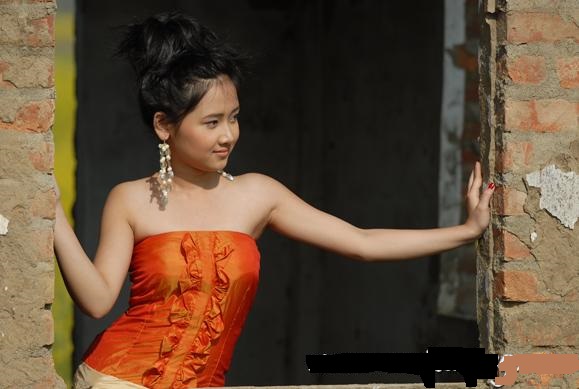
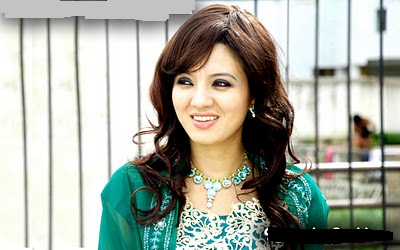


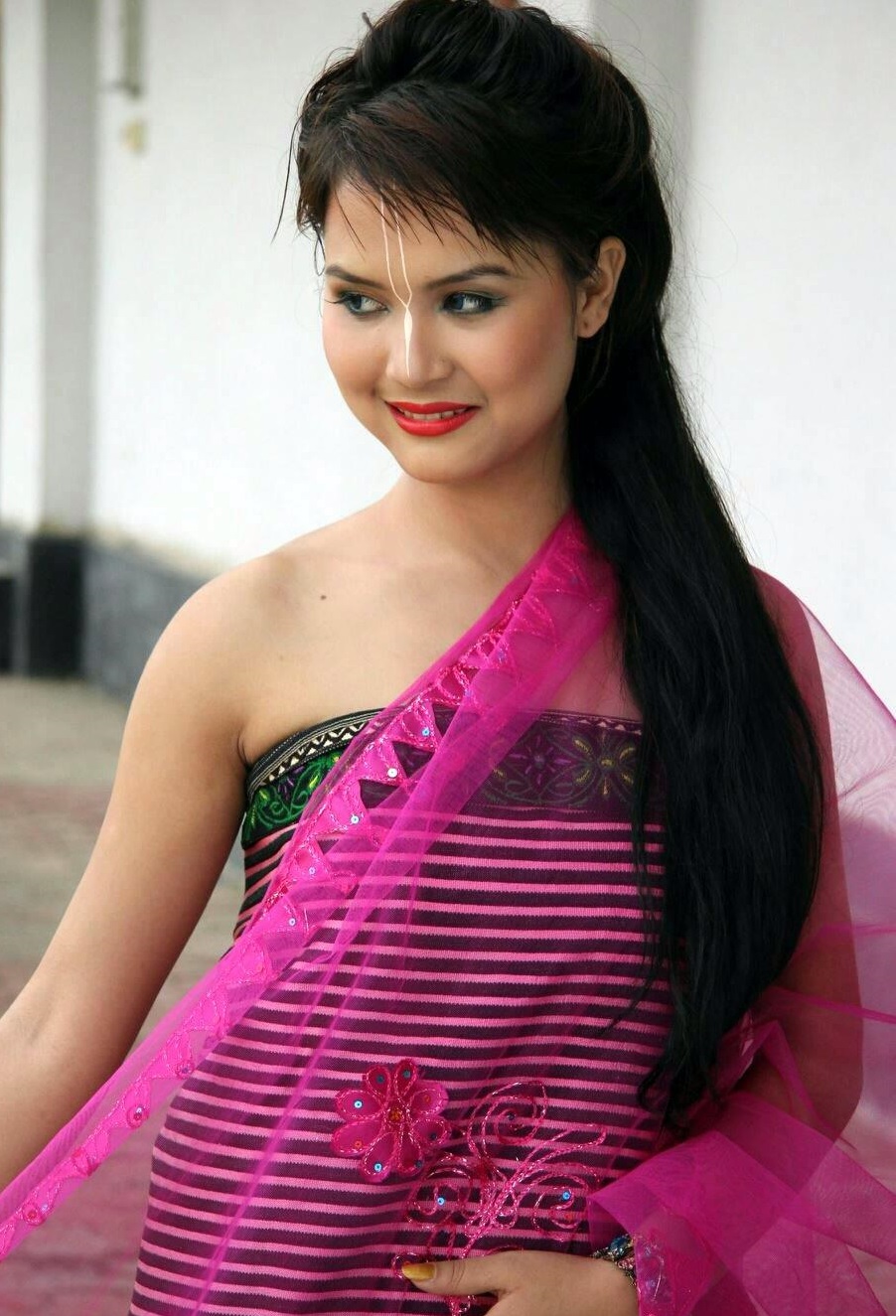
The leading actresses of 21st century Manipuri cinema
Abenao Elangbam
See Abenao Elangbam
Aheibam Diana Chanu
Height: 5'2”
Birthday: March 28
Educational Qualification: 10+2 from Thambal Marik College
Filmography: "Minambagi Phajaba" "Leichinglakki Thaja" Ichagidamak" and several music videos.
Artina Thoudam
See Artina Thoudam
(Sur) Bala Hijam
See Bala Hijam
Binata Laishram
Height: 5' 2”
Stage debut play: ‘Apunba Saktam’
Acts in Doordarshan serials
Acts in Video Albums
Filmography: "Kaorage", "Dr. Yaima", "Lonna Lonna", "Meera Memcha", "Oiramle Mahaktumak", "Lucy Kamei"
Deviya/ Tina Chingtham
Birthday: March 24
Height: 5'5”
Education: PGDBM at ICM, Imphal, Diploma on Aviation and Hospitality Management
Address: Haobam Marak Chingtham Leikai, Imphal
Filmography: Film: "Mikithi-II"; Video: "Khujina Sikanbi".
Ibethoi Thokchom
Aka: Thoi
Parents: Thokchom Sashikumar Singh and Thokchom (ongbi) Radhamani Devi
Address: Khagempalli Nganapithong Panthak
Birthday: April 22
Education: BA (English), GP Women's College
Height: 5'5
Itali Soibam
(There are two photographs but no text.)
Jenifer Loukham
Parents: Loukham Tondon Singh and Loukham ongbi Puinabati Devi
Birthday: December 25
Height: 5'2
Videography: Nangna Nungshi Kaina
Filmography: Lamjel, African Leisabi
Kamala Saikhom
Film actress and film director
Height: 5' 5”
Birthday: 27th Jan
Filmography: "Nungsee Hekta Hairagey", "Nangsu Mounee", "Shakthibi Tampha", "Khujee" “Lalibadi Eini”, “Ta Tomba”, ”Akhunba Mani”
Kripa Salam
Birthday: January 27
Height: 5'2”
Education: 10+2 from Oinam College
Address: Moirang Khunou
Filmography: Film "Meirinate Liklani;" several music videos.
Manda Leima
Height: 5' 4
Birthday: 22nd March
Filmography: Engengi Atiya, Angangba Kuraogi Mapal, Nanga Mama Oubiyu, Thengmangkhare Thabalse, Ayuki Likla, Enga Nonglakta, Lalibadi Eini (The Sky of Autum) Part 1 and 2. Kaboklei.
Maya Choudhury
Height: 5’ 4”
Date of Birth: 3 March
Filmography: Basantagee Nongallamdai Part I, II, III, Shakhenba Bhoot
Motibala Laishram
Height: 5' 3”
Filmography: "July 23" and "Autobiography" (supporting actress)
Soma Laishram
See [[3]]
Address: Haraji leikai, Imphal
Birthday: 5th January
Height: 5'3”
Qualification: BA English (Hons)
Ningthoujam Rina
See Ningthoujam Rina
Sonia Hijam
Height: 5' 5”
Born in: 1988
Filmography: Naughty Girl, Best Friend, Telanga Mamei, Mamoudo Hingchabido, Leibaklei
Sushmita
Tonthoi Leisangthem
The best actresses
Angomcha Bimol Akoijam writes: Maya, unlike in her other films that I saw during the festival, also gave an equally commendable performance in the same film. She essayed a difficult role almost to perfection by not giving in to the loudness of melodramatic acting.
She would give Manda who gave a life time performance in the film Lallasi Pal, a run for her money. Manda’s performance in the said film is an exemplar of how one enters under the skin of the character. Indeed, Manda is not Manda but Leihao in Lalasi Pal.
Binata, an immensely talented actor, did not make these two performers go unchallenged. Despite the constraints imposed on her by the script and directorial flaws, she showed her acting prowess in films such as Kaorage, Lonna Lonna and Meera Memcha.
And Seema still reminds us that she is one of our incredible performers. The maturity of a seasoned actress is what we saw in films such as Kalpana and Eidee Chatle.
While Devita (Athengbada Pharakpa Thabal, Laibaki Chandan) displayed her inherent versatility, actresses like Sonia (Tellenga Mamei) and Kamala (Sakthibi Tampha) also showed that they could give commendable performances under the right guidance of able directors. e-pao and The Sangai Express, January 31st, 2008.
Manipuri cinema: FAQs
Ranjan Yumnam Manipuri-Cinema
The Manipuri film scene in the 21st century
Film shoots are increasing across the state. The state is slowly but surely putting itself on the Indian cinema map through its low budget films. Imphal's cityscape is dotted with film posters. Ignoring bans, almost zero electricity, violence and the shadow of the Armed Forces Special Powers Act, every day some film-starved Manipuri picks up a film CD from the streets or ventures out to the crumbling cinema houses. (--Arijit Sen)
What is the typical Manipuri film like
Manipuri films are often close imitations of Hindi-Urdu commercial films in form, if not the content. Song, music and dance are one of the most important ingredients in a Manipuri film. Like some of the Mumbai’s potboilers, Manipuri heroes woo their love-interests in the sky, mountains, snow and the oceans. Hero-laden helicopters fly into a song sequence out of nowhere, even if the hero is an unemployed chap in the film. Shoots are done in foreign locations like Singapore as a trick to draw audience. Actors change their clothes many times in a span of five minutes. Even the music scores are adapted from the South Indians. Almost all the usual ‘aesthetics of attractions’ of Mumbai cinema are employed to gain eyeballs as Manipuri filmmakers struggle to recover their production cost in a highly competitive market that is confined to [four districts of] the Imphal valley.
How many Manipuri films are produced in a year?
A conservative estimate is 70-80.
Are there songs and dances in the Manipuri films?
Yes, they form an important ingredient of popular films in Manipuri films. But they are more realistic and devoid of melodrama overdose, unlike the Bollywood. Item numbers have not made an appearance in these films.
Are there playback singers?
Besides the homegrown singers, Bollywood artistes like Lata Mangeshkar, Kumar Shanu, Shaan, Kavita Krishnamurthi, Alka Yagnik, Anuradha Paudwal and many others have sung for the Manipuri film background scores.
What is the average cost of making a Manipuri digital film?
Anything between Rs 2-20 lakhs. Some films have shooting done outside the state or in foreign locations in which case the budget can almost quadruple. Popular Mumbai based TV actors are paid to make guest appearances ala Bollywood item numbers.
Are there adequate post production facilities in Manipur?
Earlier post production work used to be done at Kolkata, Mumbai, Bhubaneswar, Guwahati and Delhi . With digitalization, pop-and-mom studios have sprung up giving the sophisticated big studios a run for their money. With nothing more than a few desktops and a clutch of editing softwares, local talent has bloomed in these small facilities enabling the filmmakers to cut costs.
Why is Manipur film Industry called Imphalwood, not Manipurwood or Mollywood?
Imphal is the nerve centre of filmmaking in Manipur. In fact, the films are made by the valley based Meiteis (non-tribe Hindu population) for the Meiteis in Manipuri language.
Which is the first state in India (perhaps in the world) to fully digitalize film production, post production, distribution and exhibition?
Manipur. Music video and movie clips are swapped religiously among the tech-savvy teenagers. Trailers are uploaded on the internet. There is no costly format conversion to be made, as everything is in bits and bytes and they are convenient for distribution and sharing.
Is piracy an issue?
Definitely. Digital format is the most fertile creature that can reproduce its own clones at a neck breaking speed.
Dubbing and subtitling to expand the market
Manipuri cinema’s problem is that it has too many talented actors, directors and musicians, but too small an audience. According to Ranjan Yumnam its market is confined to [four districts of] the Imphal valley. The solution, obviously, is to reach out beyond the valley.
Vravura Films’ first production Pal (Barrier) (producer Sunita K., director Ningthouja Lancha, likely release: mid-2014) might become the first Manipuri film to do so. It is to be dubbed in all the major Northeast languages--Assamese, Khasi, Kokborok and Nagamese--and subtitled in other major languages.
Zubeen Garg, the Assamese singing-superstar, is slated to sing two songs in the Assamese version.
Women in Manipuri Cinema
The upholding of traditional values
Manipuri Cinema, a world within a world Cinema : Women in Manipuri Cinema
Written by Hueiyen News Service HueiyenLanpao
Bobby Wahengbam
Traditional Manipuri clothes--and values--are compulsory
Women in Manipuri cinema are always put from the male gaze. Most of the women put on the traditional Phanek. Western dressed or Salwar and Kameez worn women are hardly seen in films except by young heroines. But to show very goody goody traditional women, Phanek plays an important part. And westernized women are sometimes projected as bad women out of family values.
Right from the first film ‘Matamgi Manipur’, the tight joint family system is considered sacred. Strong patriarchal structure is always reflected almost in all the films. Man can have wives where the second wife is considered as villains by the family. The husband can return to the family but woman can never do the same and remarriage is taboo even in films. The more the wife is dedicated to the husband and the family, no matter the evils committed by other members of the family, the better woman she is.
Films after films the women are reminded the attitude, ‘the husband is my god”. In ‘Matamgi Manipur’ (dir. Devkumar Bose, 1972), the husband (Robindro Sharma), a working man and only earning member of a family of five heads, has stayed with a Mistress (Rashi) bringing hardship to the family. The wife (Roma), being a conventional wife in a patriarchal setup, suffers to remain in bed most of the time praying for the return of the husband. Eventually, at the end, as expected, the husband returns home after realizing the mistake where the wife and the family welcome the man wholeheartedly. If we look the other way around, any woman, no matter her social, political, professional or economical status, will never be allowed to come back once such a step has been taken.
Women who stray
In a film [can any reader provide the name of the film?], the protagonist (Pramesori), facing the economic predicament of being a wife of a joblesss husband (Gokul), takes up business where she buys cloths and other items from the border town Moreh and supply in Imphal. Unluckily, she has been hooked by an officer (Ratan). As the woman has taken a wrong step, it is expected by one and all, as a social convention, that she won’t be able to go back to her husband and claim children. Finally, the writer can’t help but to send her to God. She becomes an acetic to become an ISKON bhakta. So, the traditional and ideal woman is represented as a sufferer and devoted wife whose main duty is to serve the husband and the family of the husband without any complain under any circumstance. Worst, facing even humiliation at their hands is considered sacred obligation. But the eldest sister-in-law is put to esteemed value and purity as they are considered as mothers by brothers-in-laws.
Working women are at the receiving end as they are expected to be a perfect house wife with all the domestic affairs slavishly fulfilled.
In family melodramas, women are made the scapegoats responsible for all the misfortune happenings around. Women are the villains specially the second wives and the wives of the working men. The films and the reality are so overlapping that people use dialogue from films in real life.
Manipuri films scripted by women
Manipuri women never shy away from any activities. They are ahead of their counterparts in most of the fields including games and sports and arts and culture. Somebody had commented that Manipuri films could have not been made an impression without the contribution of women personalities. As a matter of fact, Grand Prix winner “Imagi Ningthem”(1982) and Manipuri iconic film “Ishanou”(1990) were penned by none other than Emasi Binodini Devi.bb Most of the noted films of Aribam Syam were written by Binodini including “Paokhum Ama”, “Ashangba Nongjabi” and host of others.
Another contemporary of her who involved with cinema was Khaidem Promodini Devi who had written and produced “Langlen Thadoi” and owned a studio called PK studio which used to be an oasis for film artistes, enthusiasts, musicians, technicians and writers. She had also written script for some contemporary films. Noted critic Nongmaithem Tombi convincingly stated that Khaidem Pramodini was a writer who writes only on intuition and from real life experiences.
She was not concerned about any academic research and hence not interested to read any work by any noted writer other than her friends’ work. She did not follow any rule or style in her writing. She just jotted down what she felt. The positive part of her style is the originality in the creation. Some of her literary works are adapted to films. ‘Langlen Thadoi’ was her own production directed by MA Singh. She let real life characters to work for the film ignoring the suggestions that at least the heroine should be presentable if not very beautiful.
Two others film that were adapted from her literary works are ‘Kaboklei’(2009) directed by Pillu and ‘Laisabido Mamado Anghoubido’(2011) by Romi Meitei. Followers of Khaidem Promodini complain of missing the inner ideas of the literary works in the mentioned films. (Anniversary of Khaidem Promodini, 2011).
She is followed suit by Thockchom Binapani Devi who had written and produced “Chinglen Sana”, a nostalgic feature film loosely based on the last authorized king of Manipur.
Among the women writers, Santibala is worth mentioning. In the non-fiction section, Kabita, Nirmala, Meneka Thiyam, Sonia and host of others have shown their worth. Thiyam’s “Cheng Khujok Ama” and Sonia’s ‘Guns and roses’ (2012) won awards and acclamations in many festivals.
Women producers
And in the digital video era, many women producers came forward, notable among them being Bandana of Bandana Films (Akhunba Mani, Emagi Ebungo), Ibechaobi of Sanaleibak films (Punna Amukta Nokshi), Sanahanbi of Eastern Motion Pictures’ (Khonthangi Makhol), Khongsai (Pirangna Eigi marupni),
Female producer-directors
Santa and Daina of Media Moods (Kubiba, Da Aphao, Singarei Leinam), Homeshori, Home Films (Thouri, Boiton Mangkhare), Seema of Seema films (Kalpana) among others. These last four producers also direct.
Actresses
Among the artistes, late Seema remains an iconic and the most versatile actor who never fades through years so long since her debut in “31st December” in the eighties during the VHS period. She had rule Manipuri cinema till the day she passed away last year. Her dedication and talents had been seen in the three periods of VHS, Celluloid, Digital Video and even video albums and television.
Yengkhom Roma's perspective
By Yengkhom Roma
(Yengkhom Roma is one of the top actresses of Manipur, and the female lead of first Manipuri feature film Matamgi Manipur. )
It was April 9 in 1972. The first ever Manipuri feature film Matamgi Manipur, produced by Karam Monomohan Singh was mounted for the premiere. And as the packed house tensed, in anticipation for the screen to come alive, I was so nervous, for I did the lead role.
Birbabu portrayed Ibotombi, my brother-in-law in the film. He was the one who spoke the opening dialogue in Manipuri.
"What are we having for lunch, Iteima ?"
"Dal and mashed potato. It's Ekadashi today", I replied.
The audience thundered with laughter. I panicked. Perhaps something was wrong with the act, something terribly wrong. It was never expected. The producer, the director as well as the artistes never thought that the opening dialogue would be greeted like this. The same reaction persisted as long as the film was running, I was told.
Maibam Haricharan Singh, the founder member of Roop Raag, gave the best comment. He said, "To me, it didn't mattered whether the film was good or bad. I was thrilled, simply thrilled to hear the first Manipuri dialogue on the silver screen".
The World Cinema is today one hundred years old and the Manipuri cinema is just over twenty five. Much can be said on the contribution of women in Manipuri cinema. One might not expect of this article to cover all the aspects touching the multiple roles played by women in the progress of the Manipuri cinema.
It is a known fact that men used to play the female roles when the cinema first started in India. Women were not ready to act in films. This trend continued till some educated women came forward to join in films. Kamala Devi Chattopadhyay was one such lady. She is said to have portrayed the role of 'Vasant Sena' on screen. But this dearth of female artistes never handicapped the Manipuri cinema as such.
The comparatively new art form of cinema had the potential to strike instant rapport with the masses. Creative talent finds in cinema a really affective medium. Even Manipur conceived the idea of making films way back in 1946. A group of theatre enthusiasts attempted to make a film based on the popular play Mainu Pemcha, in Hindi. Thambal Devi, the darling of Manipuri theatre, was in the title role. Another highly talented female artiste Ngangbi Devi was the playback singer for the film.
A classic Manipuri film
The challenge taken up by these two brave female artistes deserve applause. This first venture unfortunately did not make it to the silver screen. A big rush followed in the wake of Matamgi Manipur. Producers, directors and artistes with theatrical backgrounds strove at making film. The late actor-director, S.N. Chand produced Brojehdragee Luhongba, which is based on a story by Lamabam Kamal, to become the first director of a feature film from Manipur.
But the filmmakers in Manipur had to work aganist heavy odds. Want of proper technical facilities, shoe-string budgets and a small market weighed down on the Manipuri cinema. Yet, a director like Aribam Syam Sharma and a writer like M.K. Binodini Devi could surprise the world with their clarity of vision and delineation of human based values blended in the social fabric of Manipur.
Manipur joined in the race of filmmaking in India seventy-five years late. Equipped with a sound theatrical, literary and artistic background, and a deep insight of human nature, but with little technical knowhow, our filmmakers strode ahead of the rest of the Country to earn the coveted Grand Prix at Nantes (France) for the first time in India. The film was Imagi Ningthem, based on a radio play written by M.K.Binodini, which the writer improved upon and adopted for a screenplay.
It was thus from the pen of a Manipuri female writer that a film was conceived and which went on to bag one of the most prestigious recognitions that the international film world would ever bestow to any institution. Aribam Syam Sharma, with the support of Kongbrailatpam Ibohal Sharma whose company X-Cine Productions produced the film, surprised filmdom, the world over, with Imagi Ningthem.
Thirty one Manipuri feature films were made till 1997. None suffered for want of female artistes. Some theatre-groomed female artistes of yesteryears made indelible stamp on the Manipuri silver screen by their outstanding performances. Tondon Devi lent her singular charm to the success of Olangthagee Wangmadasoo. Manbi Devi made significant contribution towards the success of Ishanou and Saphabee. G.Ibeyaima Devi gave a superb performance in Yairipok Thambalnu. Lourembam Pishak Devi did stunningly well in Mayophygee Macha. And there are several others, too.
A group of young female artistes cropped up soon after. They were mostly cast in the main roles and did remarkably well with character roles. Rashi, Rajani, Jamini, Indira, Bedamani, Romola, Bhubaneshwori, Uma, Subadhani, Hemabati, Chandrashakhi, Memcha, Kiranmala, Devala, Sakhi, Kalpana, Shushila, Parvati, Sunanda, Ratnabala, Satyapyari, Bimola, Babita, Sabita, Nirmala, Narmada, Seema, Radhapyari and Sarjubala belong to this school. Almost all of them had theatrical background. Films with these female artistes have won awards galore in the national and the international fora. I had also the good fortune to belong to this genre.
It is worth mentioning that in the national level, Anoubam Kiranmala, the main actress in the film Ishanou, was honoured with the 'Special Mention' in the National Film Festival in 1991. In this context, the well-known filmcritic Phiroz Rangoonwala observed, "Anoubam Kiranmala, that superbly national actress of the Manipuri film Ishanou, really deserves the best acting award" (Screen - May 24, 1991, page 15).
Our women are generally associated with cinema in the capacity of artistes. Next comes playback singers followed by screen-playwrights and lyricists. But we have not seen any women director and technician as yet. Of the tally of thirty Manipuri feature films, counting from Matamgi Manipur to Khamba Thoibi, ten films had been written by women writers.
Another interesting fact is that during the last fifteen years or so, many female writers of Manipur are making outstanding contribution in the field of literature. Poems, short stories, novels, plays and, of course, screenplays flow from their pens. Yet others are involved with the media. The same is true of the tribal dialects. This trend is reflected in filmdom as well, I am sure. They are contributing in filmmaking, too. Their role in the evolution of our cultural history becomes all the more remarkable.
Another dimension of the Manipuri cinema is the small screen. Want of adequate fund for the celluloid has not deterred the creative urge of our film enthusiasts. They turned to the video as an alternative. This is visible among the tribals, too. Not less than a hundred and fifty video films has already been produced. Some are much acclaimed. The Tangkhul actress Sweety is now a big name on the small screen. R.C. Joycee is another much applauded Tangkhul actress. She starred in the film Mayophygee Macha.
Video filmmakers of Manipur were very lucky that two internationally established resource persons, Professor Ernest Gusella and Tomiyo Sasaki from New York had conducted a month-long workshop on "Hi-Tech Video" (Creative Video). M.K. Binodini had met the expert-couple at New York. They were visiting Jamia Milia Islamia for a four months' workshop sponsored by the Fulbright Foundation in March of 1993. M.K. Binodini had requested them to consider a workshop in Manipur. The time frame was too tight. The department of art & culture immediately took up the matter with the Foundation and the Foreign Department, Govt, of India. The workshop was ultimately held at the Manipur State Museum auditorium. Dr. K. Sobita, the curator of the museum was all help.
Ernie and Tomiyo normally conduct workshops for twelve participants. There were fifty-seven participants in the workshop. It was because they decided not to disappoint the youthful aspirants. The result was beyond expectations. Twenty appreciable films were made by the participants during the short span of one month. In fact, a woman writer like Binapani emerged out of the workshop as a resourceful film director.
It may be noted that the Manipur Film Development Corporation could organise workshops on different aspects so that Manipur film workers might acquaint themselves with the latest trends in filmmaking. Filmmaking in Manipur is a pretty hard proposition. Want of adequate equipment forces one to go to laboratories outside the state. The small size of the market results in minimum returns to the producers who cannot afford ample exposure of raw materials, and the artistes have to be satisfied with the limited exposure of films. Our producers suffer from lack of capital resources which compel them to limiting the scope of the film produced.
It is amazing that inspite of the odds and inconveniences, the contribution of this small state in the world cinema is recognised internationally. Sadly, our own state seems not to have given much serious thoughts to filmmaking. The state has not yet adopted a film policy to give incentives and the much needed boost to the filmmakers.
One might recall the statement made by Pierre Barroux, counsellorfor cultural, scientific and technical co-operation, French Embassy, when he came to participate in an international film festival in Manipur sometime back. He said, "The entire budget of your films is not enough to meet the travel expenditure involved in making our films. You don't have adequate lab facilities. We have all these. And yet we do not have the potential of your films, the force of the subject that you have in Ishanou. My wife witnessed Ishanou nine times. And she still wants to. Here we seek your co-operation. We could help each other a lot".
One often wonders why and how it is possible at all for our women to earn laurels in the national and international film arena, inspite of their want of adequate training. Our unique cultural heritage is surely the answer. Our women always take active roles in our folk rituals and religious festivities. These social institutions probably grooms them into such sound artistic personalities. It is the ethos of our social institutions that train the psyches of our women for their eventual success in the realm of cinema.
It is my firm belief that Manipuri cinema will surmount all these handicaps and shall attain still greater heights.
Yengkhom Roma, a highly successful actress of yester-year, wrote this article as part of MFDC 25 year (1972-1997) celebration
This article was webcast with due courtesy to MFDC (Manipur Film Development Corporation) on June 06 2009.
Constraints
Bit Irom
Manipuri film producers are facing the following main problems - (1) Financial problems (2) social problems (3) technical problems (4) lack of screening hall. Manipur needs to have a separate film financing agency which can give loan to film makers, film exhibitors, film distributors and any other concerns/films. There is as yet no scheme of film financing under MFDC Ltd. or the state Government. However, the central government entrusts such activities to the NFDC, Films Division, DD and some other banks. The important thing is lack of film screening hall. Manipuri producers have to approach the film exhibitions earnestly to get the timing/programmes of exhibition of their film. In Manipur most of the theatres are booked in series with English films. They can hardly get chunks in theatres only when the film distributors do agree to spare the time, they get hall.
Needless to say, the Manipuri film producers are inspired by the love of the medium and the art rather than for commercial consideration. The talent, the enthusiasm and the rich artistic resources found in Manipur can be well exploited to produce excellent films by augmenting the technical requirements and financial resources.
'Self'-censorship: ensuring Manipuri films do not show pan-Indian values
Culture of Censorship in Manipuri Cinema By R. Nithya, February 8, 2013
By Ranjan Yumnam Manipuri-Cinema
By Arijit Sen/ The other side of Manipur: Film-making and acting
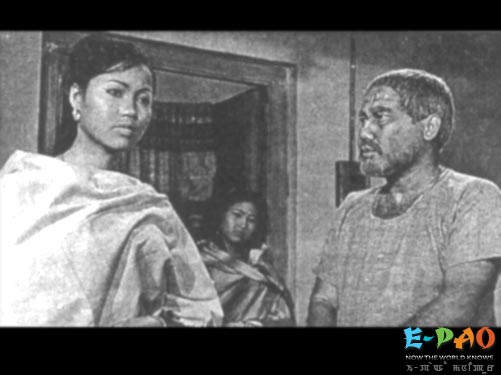
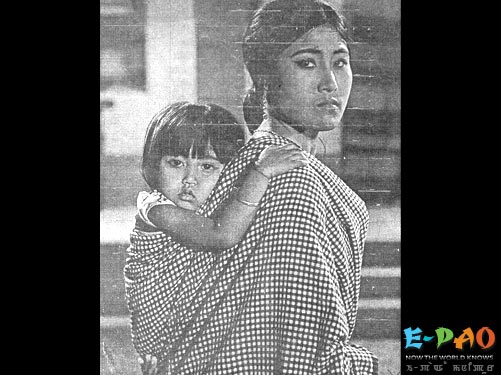
In 1972, the year of its statehood, Manipur got its first film screened at Imphal's cinema houses. But by 1999, underground outfit Revolutionary People's Front banned Bollywood films to prevent cultural invasion.
"The ban was a boost because people started to make local films. At that time people were making 70 to 80 films a year," Bachaspatimayum Sunzu says.
In Imphalwood (Manipur film industry), the movies are made by the Meiteis --the non-tribal Hindus-- in Manipuri language.
After a period of Bollywood films dominating the cinema houses in Manipur, some clandestine organizations imposed cultural regimentation and banned screening of Indian movies there. The Film Forum of Manipur has also regulated itself on the lines of Manipuri culture, shunning everything that is not Meitei.
The procedure that Manipuri filmmakers have to follow
"We have the Indian Censor Board in Guwhati. Other than that, we have two censor boards in Manipur. One is the Film Forum and the other is AMMIK (Apunba Manipur Matam Ishei Kanglup for music). If you make a music video in Manipur, first you have to send your lyrics and the song to AMIK. They’ll screen your song and lyrics, and give you a certificate. Once you have the certificate, you start making your music video. And once, the music video is done, you go to the film forum and they screen [the video] again. They give you a certificate and release it in the market or go to the local cable network for telecast." On the other hand, filmmakers send their films to the Film Forum where the Preview Committee will screen the film and give them a certificate if they approve it. Then the filmmakers go to Guwhati and get a certificate from the Central Board of Film Certification.
Ranjan Yumnam adds: This mutually agreed code is enforced by the preview committee of the Film Forum, Manipur. A director must submit his print and screen it before the said committee for clearance. The committee approves the film on the basis of some criteria, most of which to determine whether the film transgresses the line of decency, misrepresents the culture of the Manipuris or imitates too profusely from Bollywood. The members of this committee are known to show their utmost displeasure at the sight of sarees, sindur, mangal sutra, heavy make-up, exposed ribs and ‘vulgar scenes’. A director has to comply if cuts are recommended in any portion of the film. Only then can it be submitted formally to the Central Board of Film Censorship at Guwahati for censorship certificate.
It appears to be quite a temptation for a Manipuri director to make use of alien cultural symbols, often subconsciously, like a mangal sutra, a North Indian usage which does not exist in the Manipuri society. The preview committee acts as a filter to sift through such kind of disconnect between the reality and the cinematic representations.
The DOs and DON'Ts of Imphalwood
A sort of cultural regimentation [has been] imposed on the filmmakers by the underground organisations.
Sketching the DOs and DON'Ts in Imphalwood, Oinam Doren stated that one "cannot use the words 'mummy' and 'daddy' in Manipuri cinema.” The words need to be replaced by Manipuri equivalents. He also said that filmmakers cannot give English or mainland Indian names to their characters, but only local Manipuri ones.
The list of things which are banned in Manipuri films comprise commonly used items in mainland Indian films: saree, fake eyelashes, bindi, sindoor, kajal, mini skirts, backless costumes, and kurta pajama.
Elements of sexual titillation are completely absent from the Manipuri cinema
The Manipuris are a very conservative people. It’s an article of faith among the Manipuris that women should not drink wine, not reveal too much cleavage, not go out late in the night, not laugh too loud, not have food before their husbands do and so on. [All these are pan-Indian values as well.]
These values get reflected in the Manipuri cinema.
The consequences of disobeying
The Imphalwood filmmakers are aware of the consequences if they cross the line of decency and fantasy.
Doren went on to explain why filmmakers in Manipur take the film forum seriously. About ten years ago in which a young woman was shot at by some people because she acted in an erotic film. Other people involved in the movie have either fled the state, or have been executed. A famous actress from Manipuri Cinema is banned from acting in the region’s movies because she recently acted in a Bollywood film. "Another famous actress is banned from acting in Manipuri cinema because she married a non-Manipuri," he said.
The community has a powerful impact on what one can do in Manipur—not only in the films but also in other walks of life. If a filmmaker ignores the sensitivities of the Manipuri populace, she is in for a sure trouble. That trouble can also come from the insurgents who considers Manipuri cinema to be a nationalistic product and a cultural ambassador. This notion has led to some actors being prohibited from working together in films because of their too ‘inappropriate’ on-screen and off-screen chemistry.
In an extreme case, a female actor was shot at her legs because she acted in an erotic scene. Some of her male colleagues have paid a direr price: they have been executed while others fled to neighbouring states. This happened about a decade ago.
Every popular film seen as cultural assertion
Mamta Murthy narrated her experience while making Fried fish, chicken soup & a premiere show.
Her film follows a Manipuri film titled Kunti. Interestingly, the film has a mainland Indian name as its title. The Film Forum expressed their disapproval towards a character in the film who wanted to have chicken soup. Another point at which the Film Forum censured the makers of Kunti was when a couple in the film changes costumes in a song. The director had tried to explain to the Forum that in the beginning of the song the couple was dating and by the end of the song, they were married and had a child. Hence, a change in costumes. But because it seemed to have been inspired from Bollywood films, the Film Forum did not let it pass. Murthy said that filmmakers in Manipur tacitly support the Film Forum at least in the context of reclaiming the Meiteis culture. But "if you support it [censorship] at one level, it is going to come back and bite you at another level," she said.
The results of this 'self'-censorship
L. Somi Roy [pointed out that] Bollywood movies were banned in Manipur in 2000. When Roy went to Manipur after a long absence, he found that "all the cinema halls were shut down and had been turned into shopping malls. I came back the next year and Manipur digital film industry had started and there were 30 films being made. They were all copies of Bollywood. One of them was a shot-by-shot remake of Devdas starring Shah Rukh Khan in Manipuri costumes," he said.
Then in 2005, the Central Library was set on fire because all the books there were in Bengali script. In 2007, the Museum of Modern Art in the US had a screening of a series of Indian films called 'India Now'. Paban Kumar Haobam's A Cry in the Dark was one of the films in this series. "[It] is a horrific film about a protest against a rape case by the army in Manipur, and a man who self-immolated. My friends at the Museum of Modern Art told me that this film was requested by the Consultant General in Los Angeles for it to be dropped from the series. There was another film on the Gujarat riots that the Consultant General was also not comfortable with. So there was a bit of censorship on that side of the ocean as well," Roy said.
Roy has worked with the Film Forum on two different occasions during which he happened to witness the other side of Film Forum which stood up for the film fraternity. "I did a festival called 'Replay,' which is a film festival on sports and performance -- the two things that Manipuris are good at. And the second 'Replay' was almost cancelled because of an impending strike led by Film Forum.” The strike was an embodiment of support by the Film Forum for the film producers who were demanded an unrevealed sum of money by an armed guerilla outfit. “It’s a real mix bag,” Roy concluded.
Censorship and the Indian state
Bimol Akoijam points out that the Indian state never had censorship issues with Manipuri feature films because Manipuri filmmakers are not considered to be politically grounded. “There are images in the documentary genre which might disturb India... but again those are not deployed as critical vantage points,” he said. But talking about his in-production film, he said, “You have to be political when you make movies.”
Parleys
Many rounds of parleys have taken place between the Film Forum, Manipuri, the apex body of the Imphalwood and the underground organisations on censorship issues. While the Film Forum, Manipur has been zealous about guarding its artistic freedom, the UGs have been insisting on enforcing a code of conventions that purport to uphold the dignity of the Manipuri culture and society. A middle ground has been struck which seeks to satisfy both the filmmakers and the UGs.
Korean and Latin American values are preferred?
Korean films are being promoted as alternative films that Manipuris can emulate. Korean and Latin American movies make their foray into Manipur, via the international market at Moreh, a border town straddling Manipur and Myanmar.
See also
Cinemas of the North-East
Assamese cinema: This page has, at the bottom, links to several other articles in Indpaedia.com related to Assamese cinema.
Manipuri Cinema North-Eastern cinema
Individual pages about:
Abenao Elangbam Aribam Shyam Sharma Bala Hijam Hamom Sadananda Lairenjam Olen Lin Laishram MA Singh/ Maibam Amuthoi Mohen Naorem Ningthoujam Rina Premjit Naoroibam Raju Nong Romi Meetei Sagolsem Tijendra Tonthoi Leisangthem Aribam Shyam Sharma
Manipur A history of Manipur: 1890-1930 Maisnam Betombi Singh Mary Kom Manipur: cuisine
See also Mary Kom, the film





